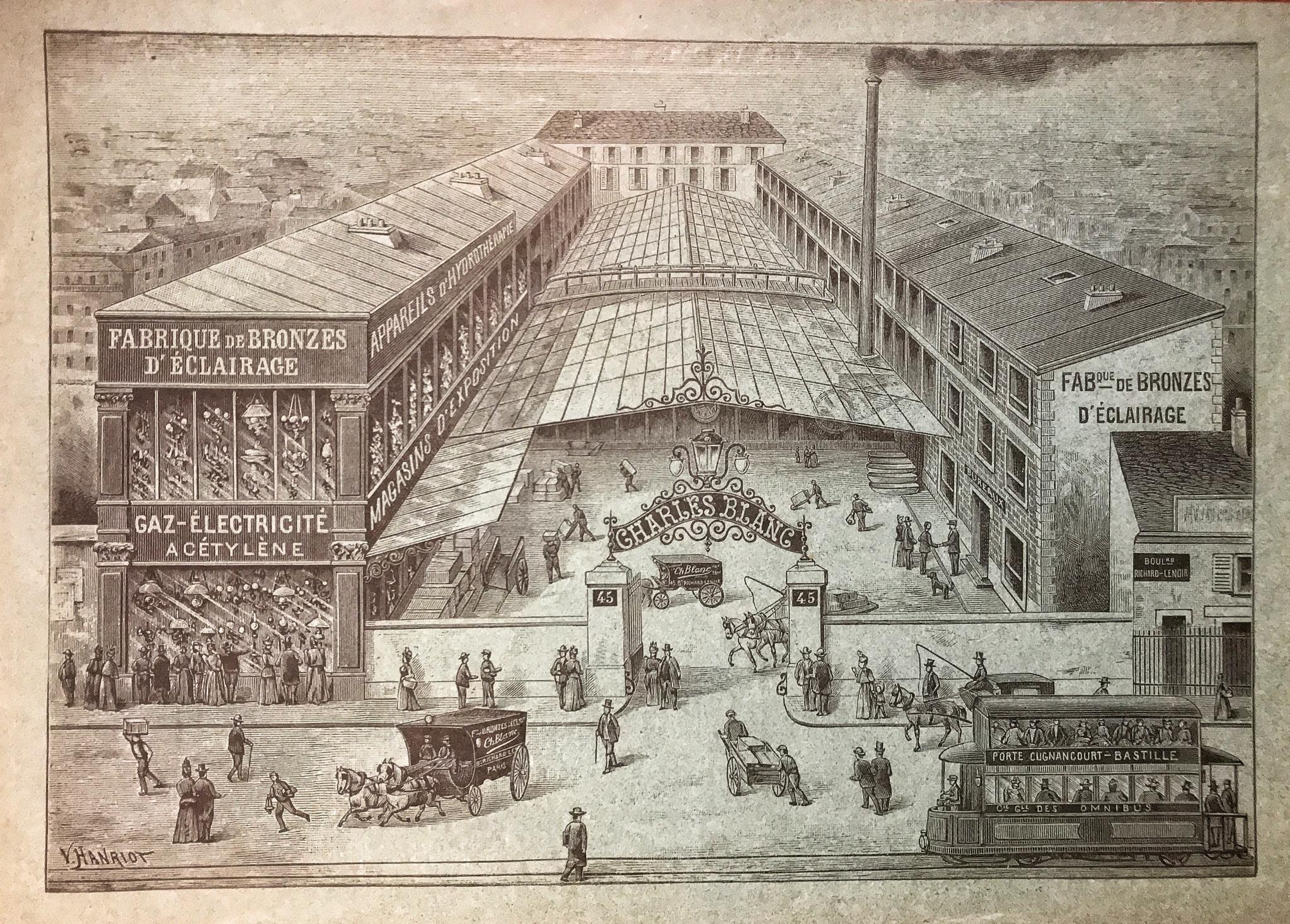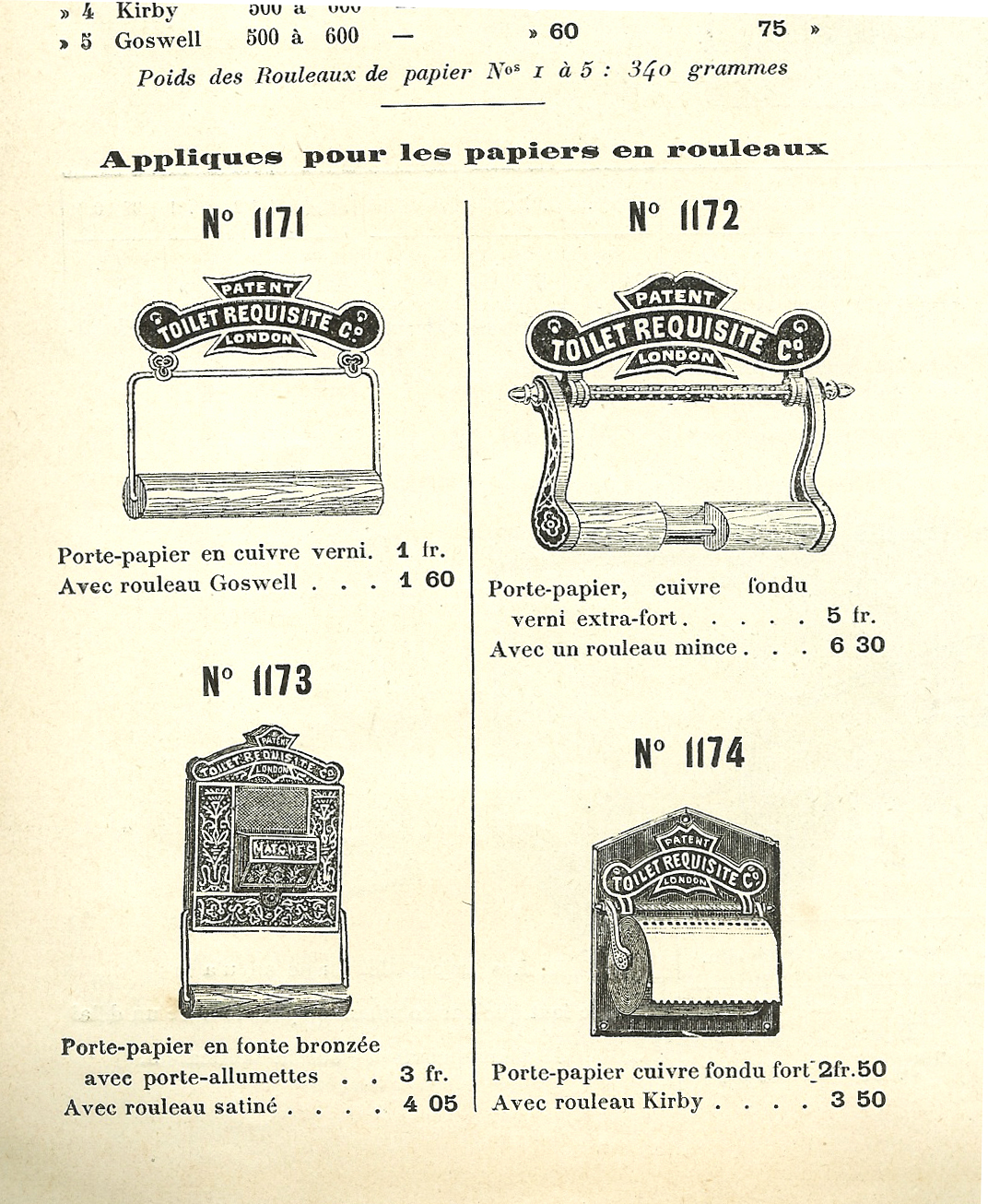Bathroom history
 The bathroom at a glance
The bathroom at a glance
Taking a bath is something of all times. But personal hygiene wasn't always as normal as it is today. At the end of the 19th century Europe as well as the US passed through a periode of industrialisation and urbanisation. Big cities were tormented by frequent epidemics of all sorts because of the lack of a proper sewage system. City councils decided to develop sewage systems in order to banish all diseases from the cities. In the US very strict sanitation laws were issued at the end of the 19th century that prohibited the construction of new houses without a proper toilet and wash facility and closed down houses where such an installation had not been installed. In the Netherlands such sanitation laws came only in effect after 1910 and only in 1965 every newly constructed house was to have a bathroom.
The need for sanitary ware became bigger and the amount of inventions and patents that were issued for these inventions increased dramatically towards the end of the century. In the UK Alexander Cummings - a clock maker - invented the s-trap and it was Joseph Bramah - a carpenter- that combined this invention with a flushing system and started to cooperate with potteries such as Wedgewood to make decorated ceramic pans. He was the first reseller of an item that we today call the WC, the water closet. A combination of a water lock and a porcelain vessel that can be flushed with water from a reservoir or cistern. But his invention - which he sold in a shop in St.Giles in London - was expensive and certainly not for the great masses. Another complication was that proper sewage was still lacking and the water was still going into the soil, polluting it.
With the installation of running water in the houses it became easier to get water and with the heating water kettles this water could be heated. Wood and charcoal were to be replaced within a few decades with gas and later with electricity and bathrooms were equipped with boilers. But apart from (clean) running water, the installation of sewage systems was the most important step towards a cleaner and healthier city. In the UK and mainly in London these projects were undertaken from the mid nineteen hundreds and by the end of the century London sewage systems were fully functional. Clean water an a sewage system were now available for the larger part of the inhabitants.
 The beginning of the 20th century
The beginning of the 20th century
Manufacturers of ceramic wash bowls followed all the invention in the field of the sanitary inventions closely and they started to develop all kinds of furniture for the space that was soon to be called 'the bathroom'. In the beginning it was only for the more fortunate ones who could afford such furniture but soon the demand became bigger and mass production made the items more affordable, also for the upcoming middle classes.
In the beginning the bathroom was a kind of extension to the bedroom. In the wealthier households there was a sofa kind of tub, covered with all kinds of cloth drapings. Not only to hide a nude body but mainly because the material from which the first tubs were made, zinc, was not altogether very comfortable to sit in. At the end of the 19th century the tub became more luxurious and comfortable, it became a separate piece of furniture with its own esthetic appearance. The zinc material was replaced by copper which was a logical choice since copper tends to keep the water warm and is a much more pleasant material to sit in. Cleaning wise it was not so easy to maintain. But in those days the rich and wealthy did care less about that aspect since the house staff was supposed to take care of that.
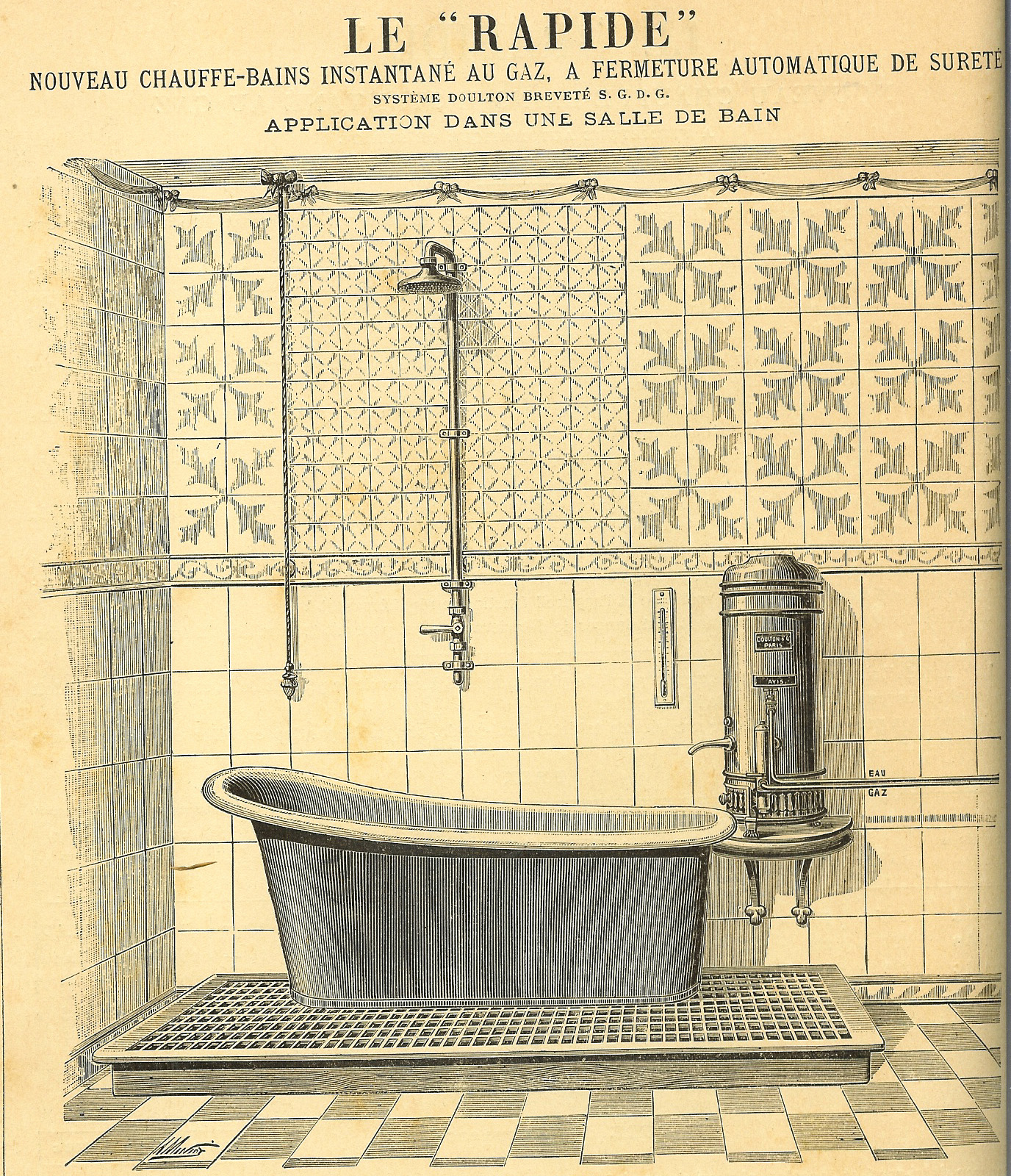
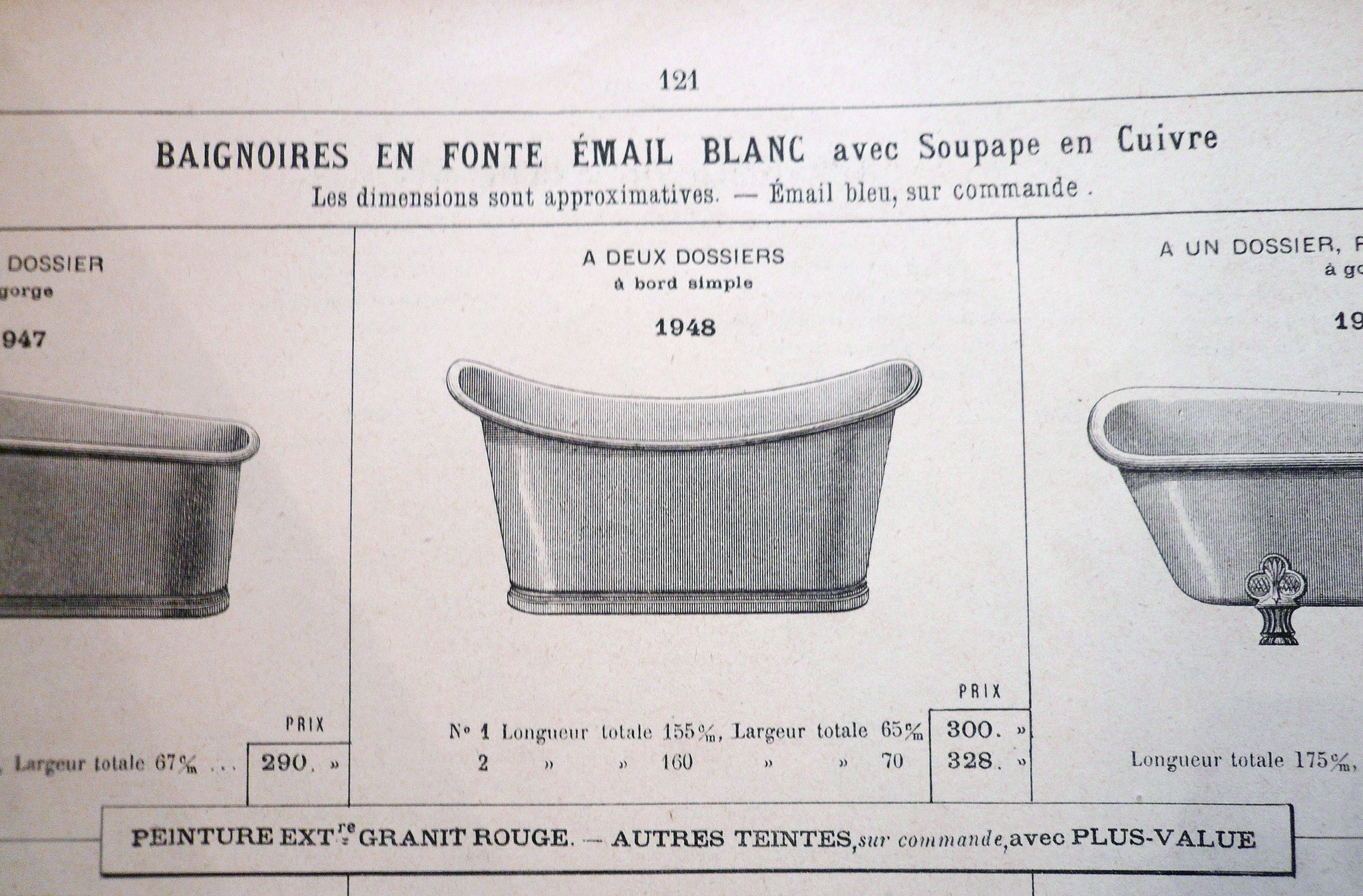
In France, England and the US newly built houses were from appr. 1900 being equipped with a separate bathroom. In these early bathrooms we usually find a washbasin and a wc and depending on the wealth of the family also a freestanding bathtub. In the very luxurious bathrooms there was sometimes a separate shower and a bidet. But in those early bathroom days the trend was to shower in the tub.
The bathroom had become a separate part of the house, with tiled walls and floors that could be kept clean easily. Towards the end of the 19th century the copper bathtub was being more and more replaced by the enamelled bathtub. Also here hygiene played a major role, enamel was much easier to clean than the copper tubs.

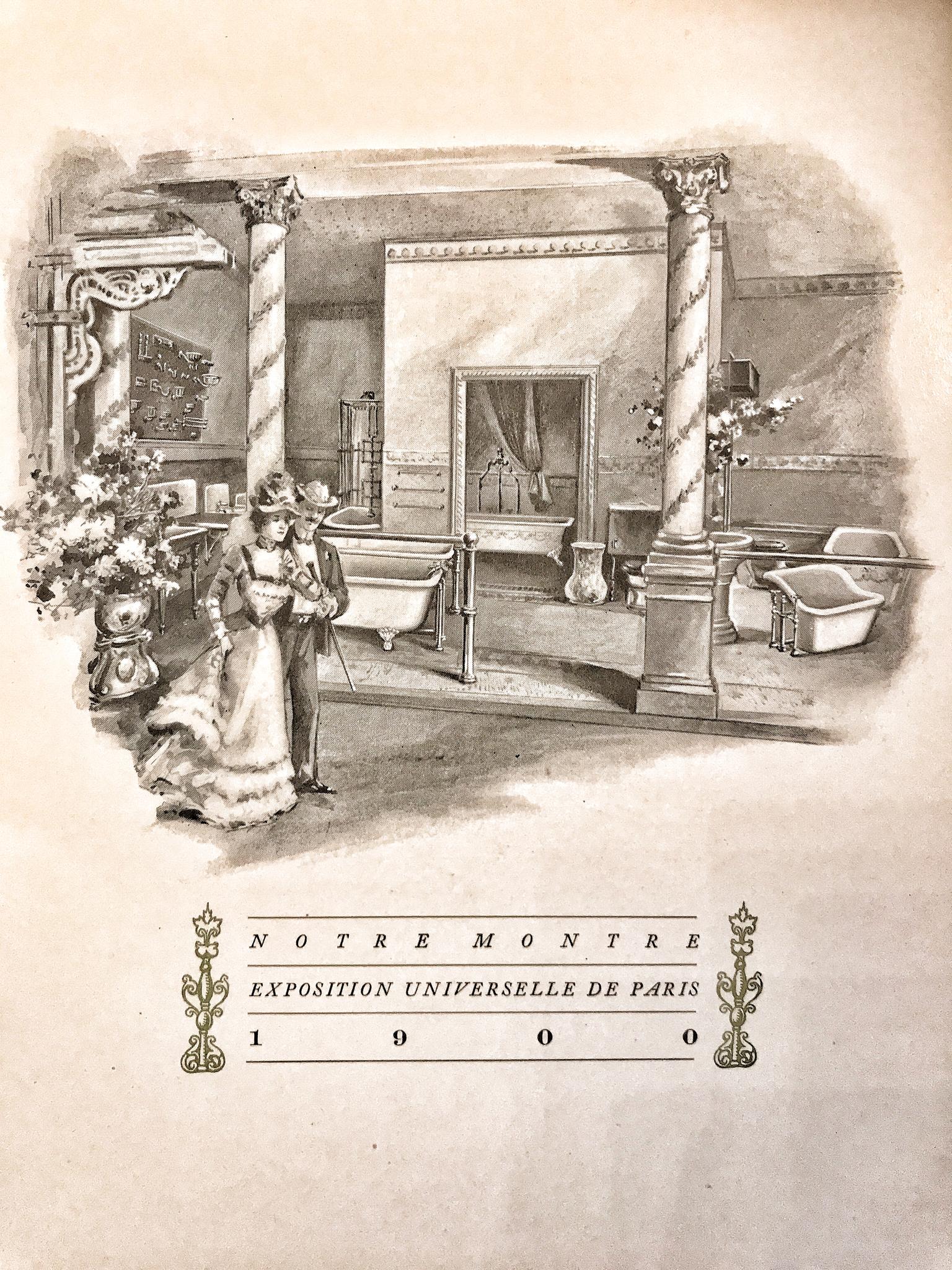
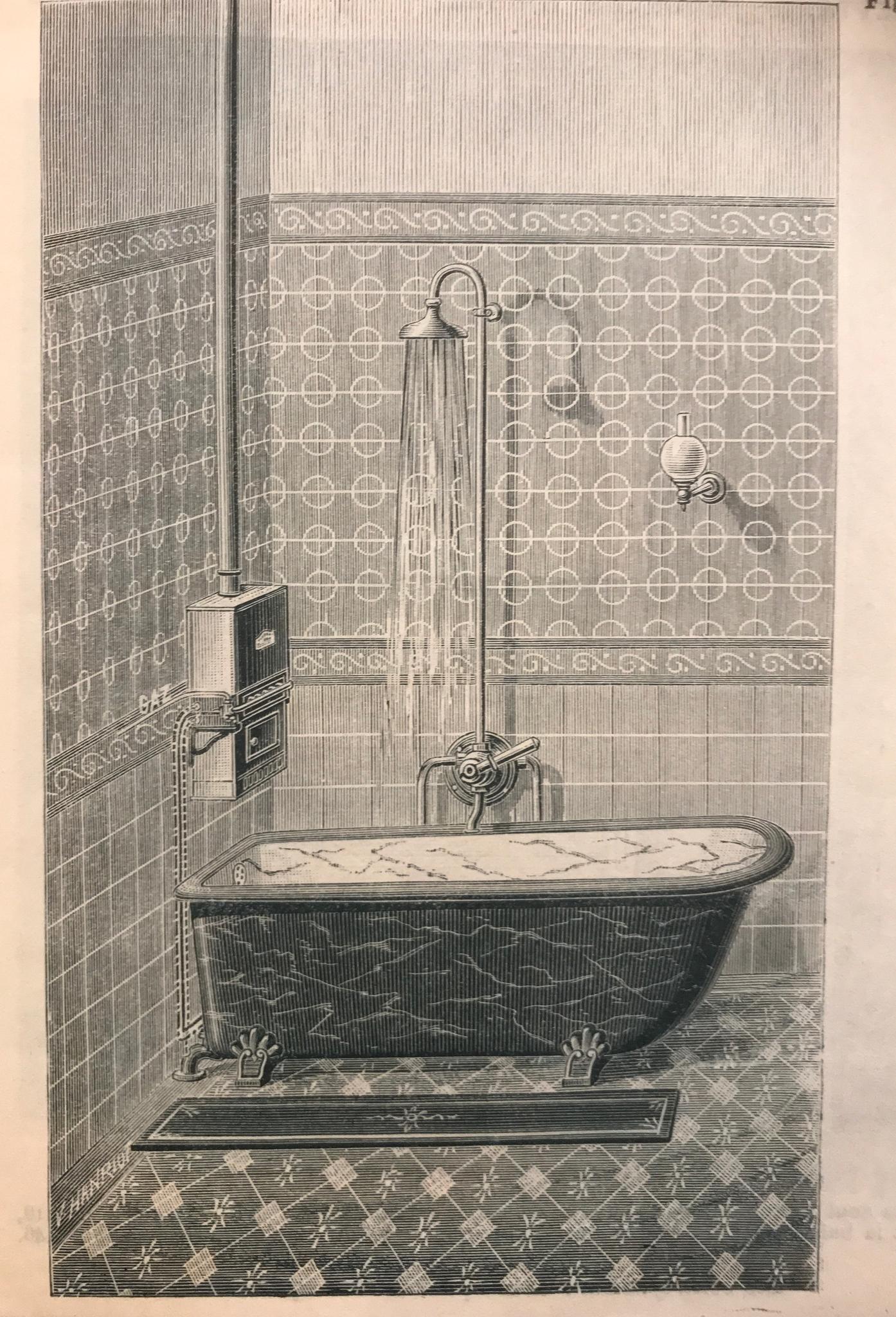
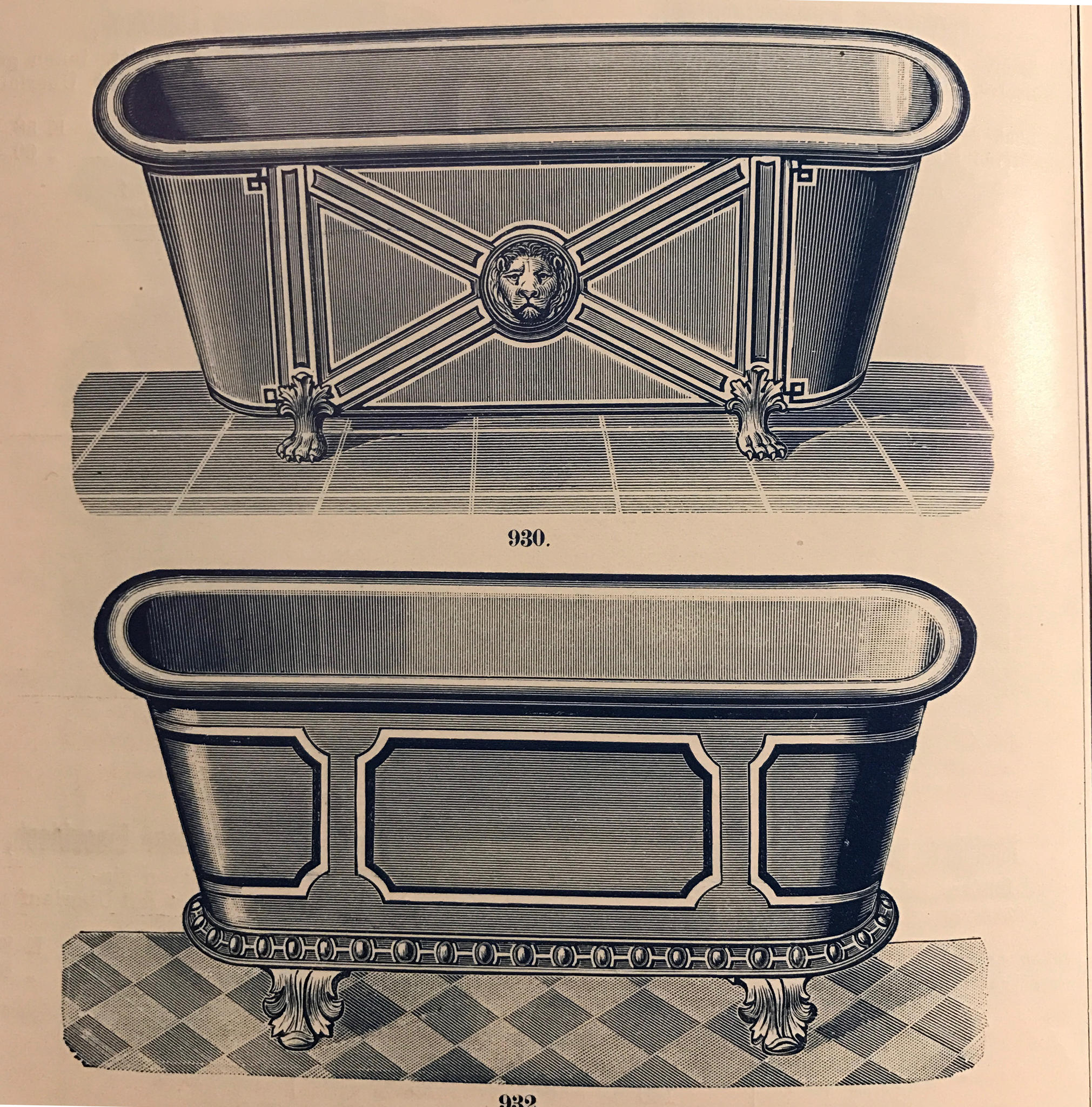
These developments lead to a high demand for sanitary ware and to mass production of these items that were so desirable. Potteries that used to focus on tableware now started to produce ceramic bathroom equipment on a large scale. In the US we see manufactures such as JC Mott, Kohler and Shanks and Mayer Sniffin, in France the compagnies Rogeat & Cie, Porcher, Charles Blanc and Jacob Delafon were the most important. England had the famous pottery firm Twyford's that built, in the mid eighties of the 19th century, a special factory for the purpose of bathroom ceramics. But also Johnson & Brothers, Brown, Westhead & Moore were important and they exported many products to the European mainland.
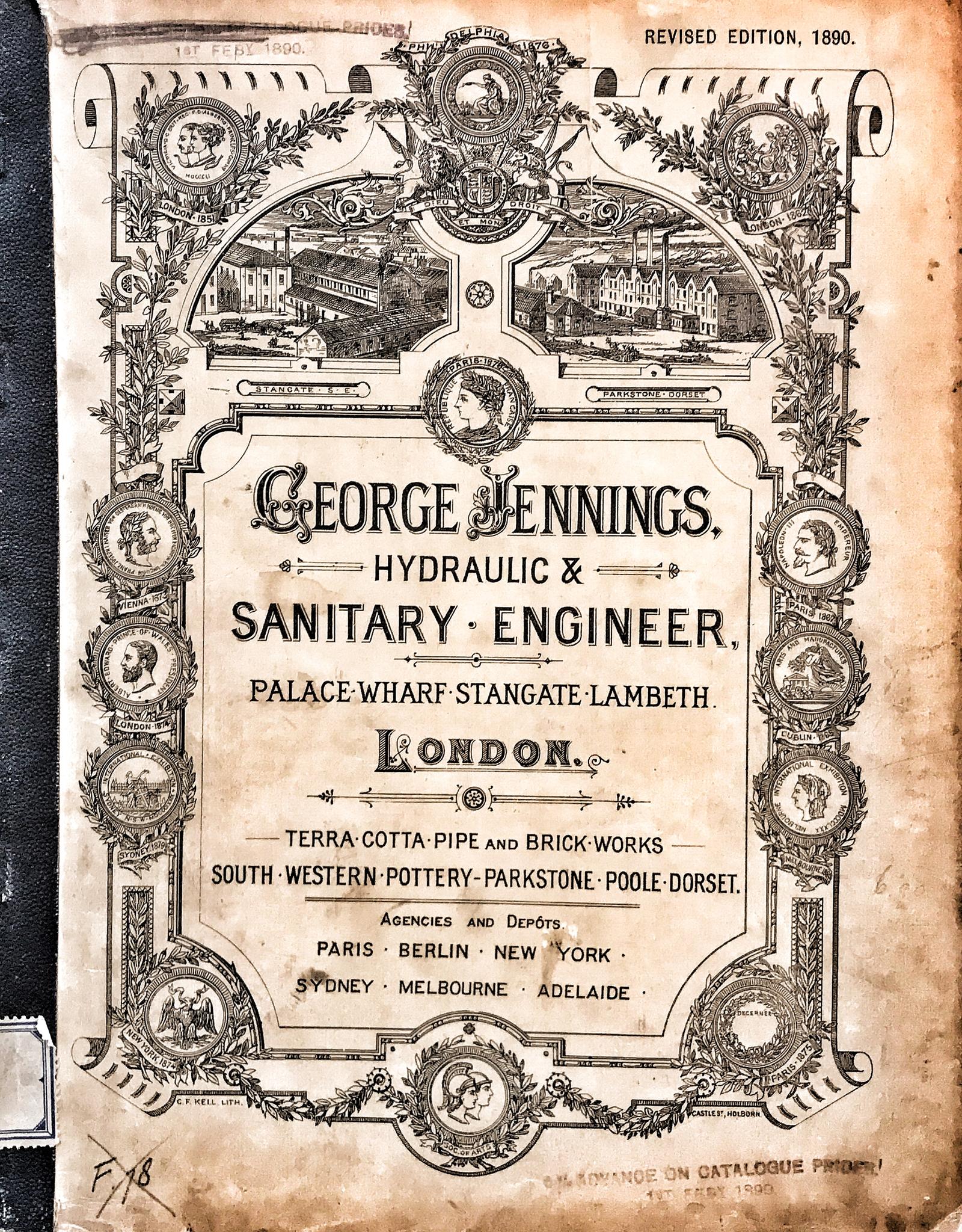
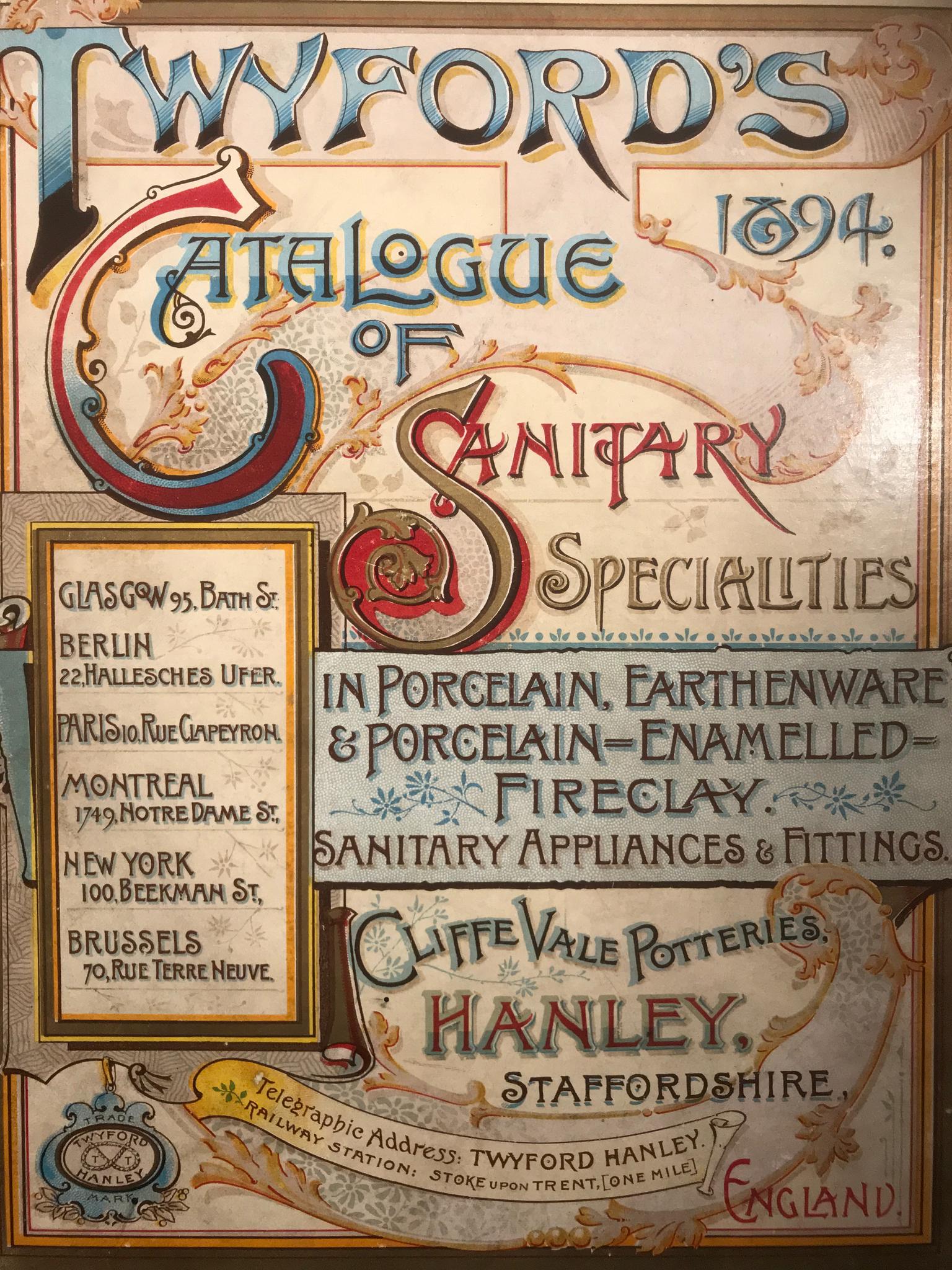
Also in the Netherlands there were companies that specialised in all these new products. On the Prins Hendrikkade in Amsterdam one could find the showroom of the Van den Berg & Co company. Stokvis and Peck & Co were also active around 1900 in this field. They did not produce these items but they imported the products for the Dutch public, mainly from the UK but also from Germany. They took care of the installation. In the catalogues of Stokvis we can see that they were mainly selling the products of Twyford's, their Dutch catalogue is almost an exact copy of the Twyford's catalogue from 1894.
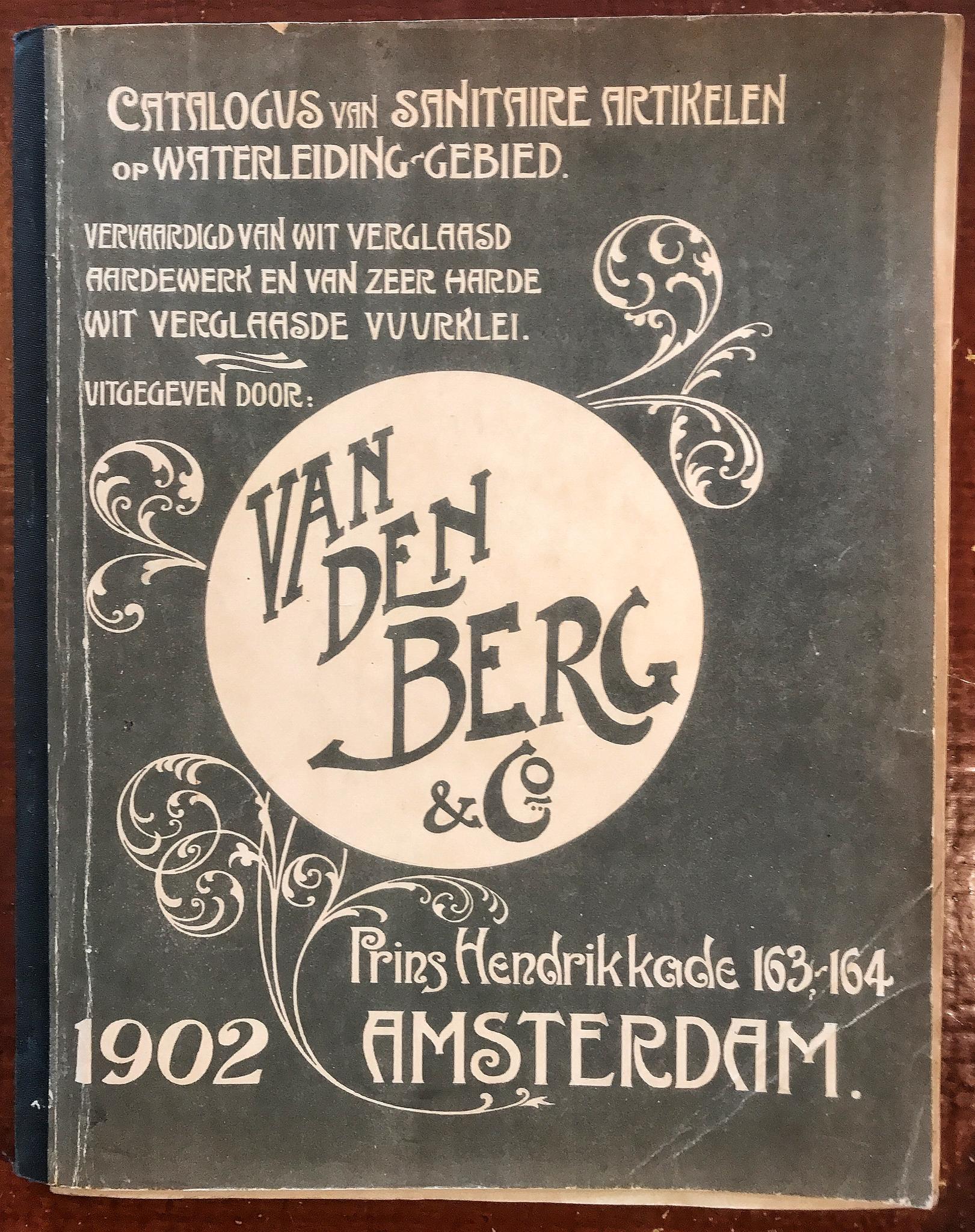
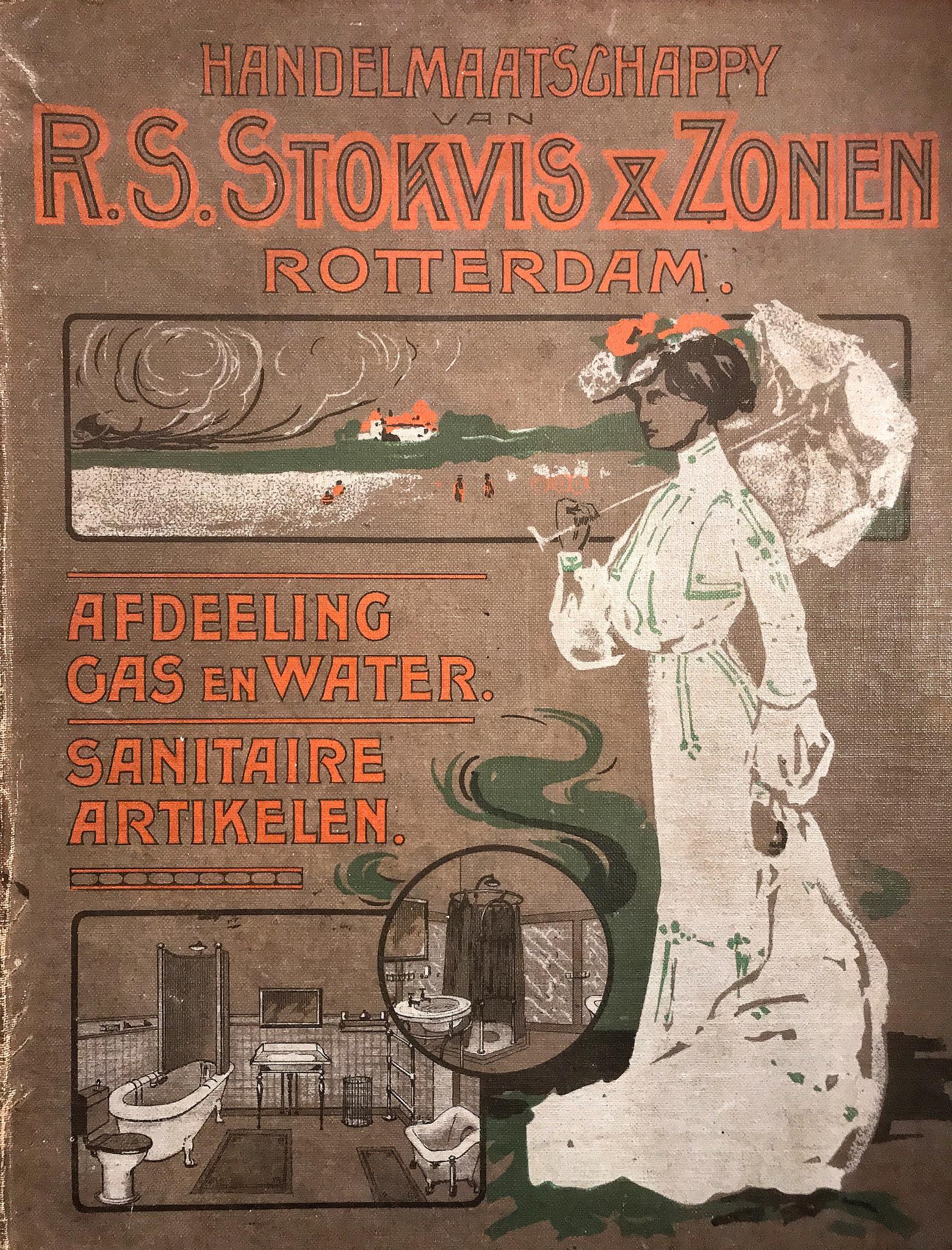
The items these companies sold were sometimes customised for the Dutch market. Wc pan's were given Dutch names that would sound more familiar to the Dutch customers. So for instance wc pan's were given the name 'Old Amstel' instead of 'Niagara Fall'. All the companies had extensive catalogues to present their collection and these catalogues nowadays give us a pretty good insight in how fast the developments in the bathroom business were going. It's truly amazing to see the variety in models, decorations and colours that one could choose from. They were all presented as being 'the newest thing' on the market, as 'very modern' and 'hygienic', all aspects that were extremely important in those early days. It’s interesting to observe that in a period in which there were so many developments in sanitary appliances there were few new trends in bathroom fashion. Models that you see in catalogues from the end of the 19th century are still available 10 or 15 years later, of course often in an improved version but the shapes stay relatively unchanged until the First World War.
 Visual Language of the Bath
Visual Language of the Bath
In the beginning of the 20th century most households that could afford a bathtub changed the brass or zinc ones for a cast-iron enameled one. The brass tubs had to be abraded with chlorohydric acid to remove oxidation, for an enameled bath lather was sufficient. Most firms offered an enormous choice in models in different sizes and versions. Oval, straight back, with an overflow, with a white exterior and plain legs of with the most elaborate legs and elegant decorations on the exterior. The customer could make his choice from a wide variety of colors and patterns. The characteristic legs of these bathtubs often had the shape of a lion’s paw of an eagle’s claw that held a ball. From the beginning of the twentieth century you also see floral patterns, influenced by the Art Nouveau.
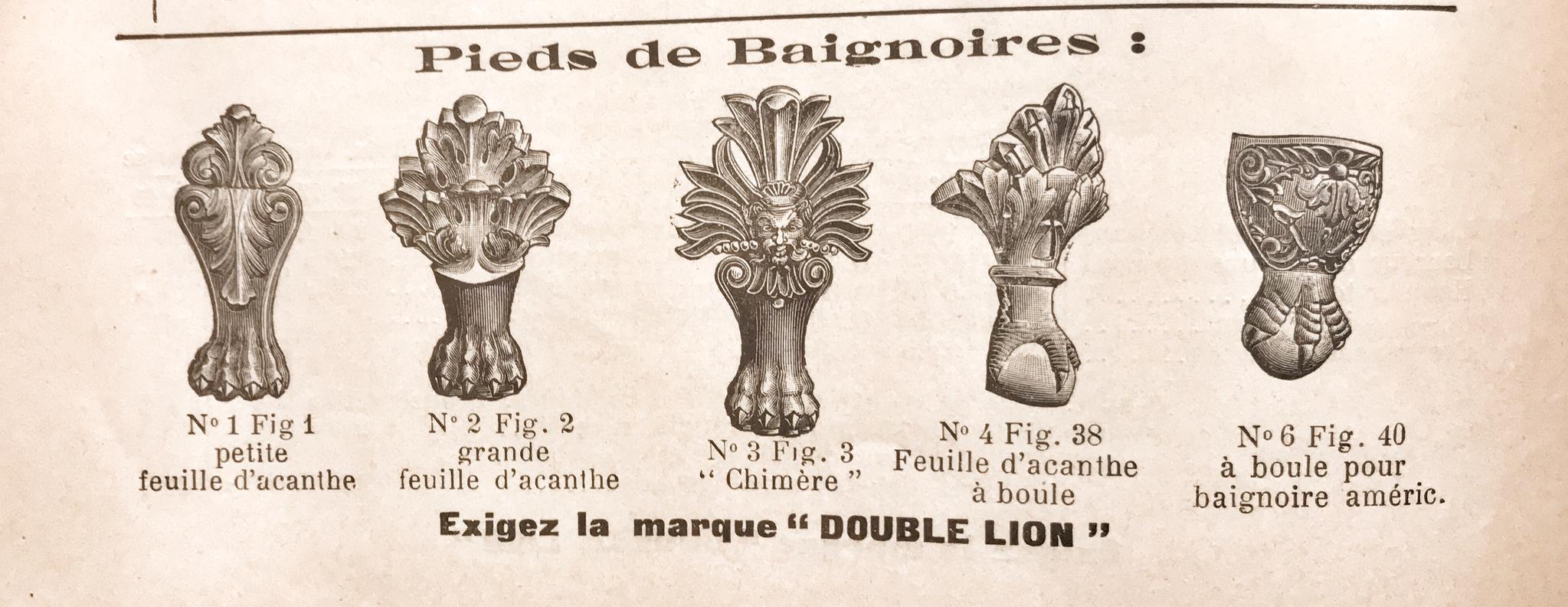
Ceramic bathtubs, glazed fire clay, also came into fashion. Sometimes on round of square legs but more often without legs and fit for a corner. Some firms even offered cast-iron corner tubs, the summit of modern functionality. These expensive models were meant for the very rich and because of their weight – often over 400 kilos’ – not suited for every house.
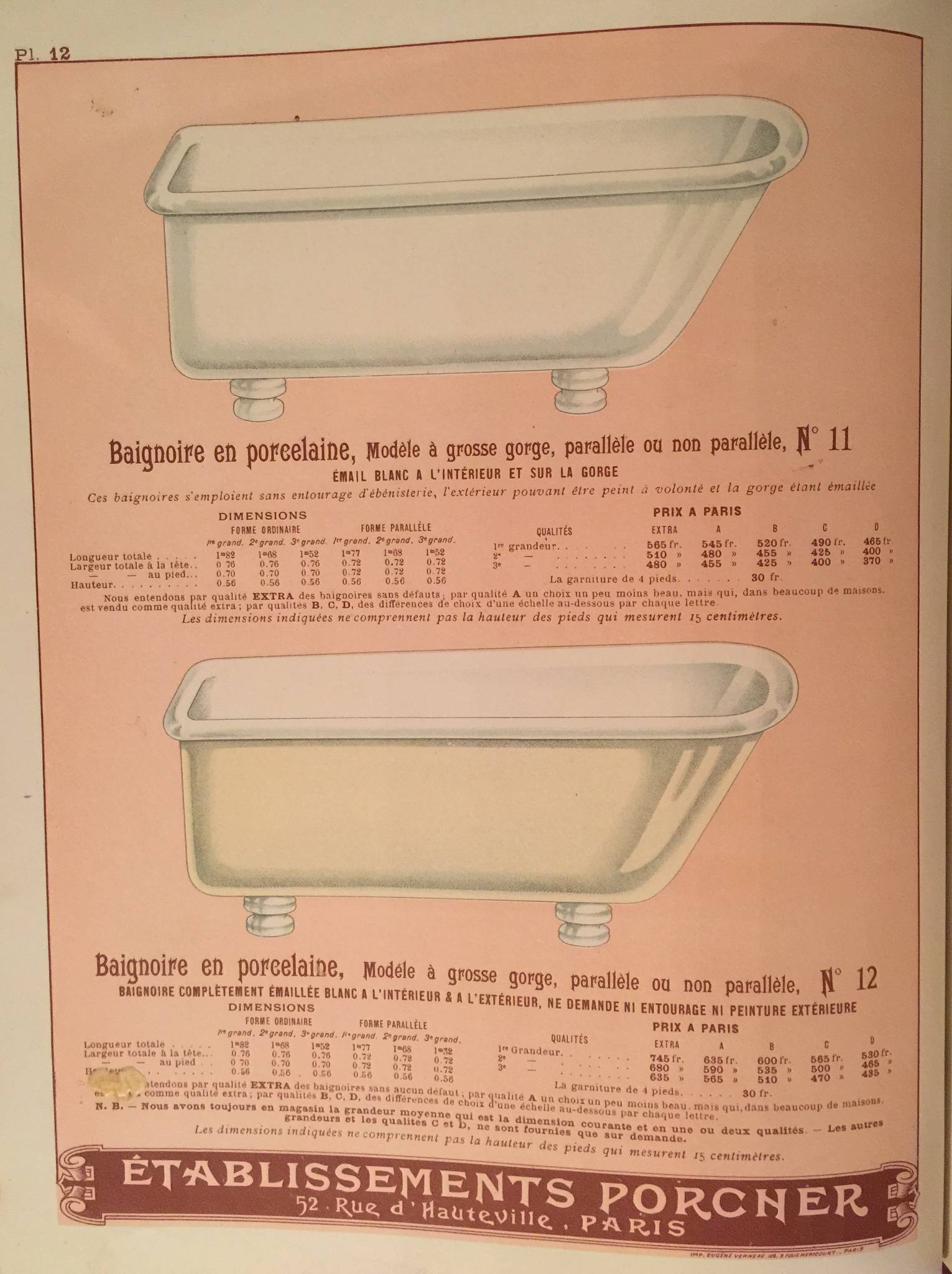
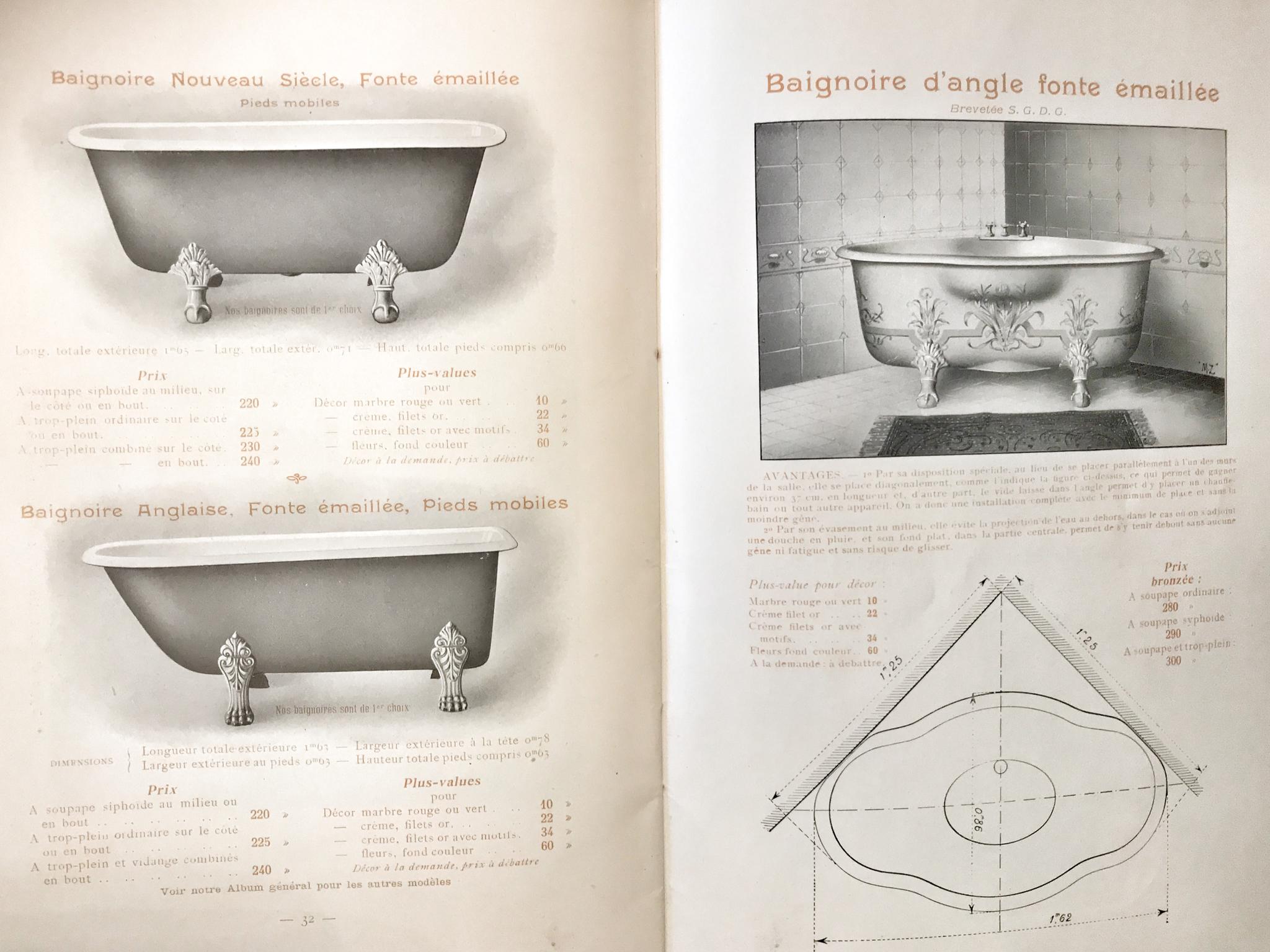
The First World War marks a clear transformation in bathroom styles, especially in France where millions of men perished and women didn’t only manage the household but were often forced to get a job. Household staff that could do the difficult cleaning jobs was, even in the richer classes, no longer self-evident. Therefore, the call for easy to clean bathes with simpler forms and less details grew. New models were being designed with this in mind.
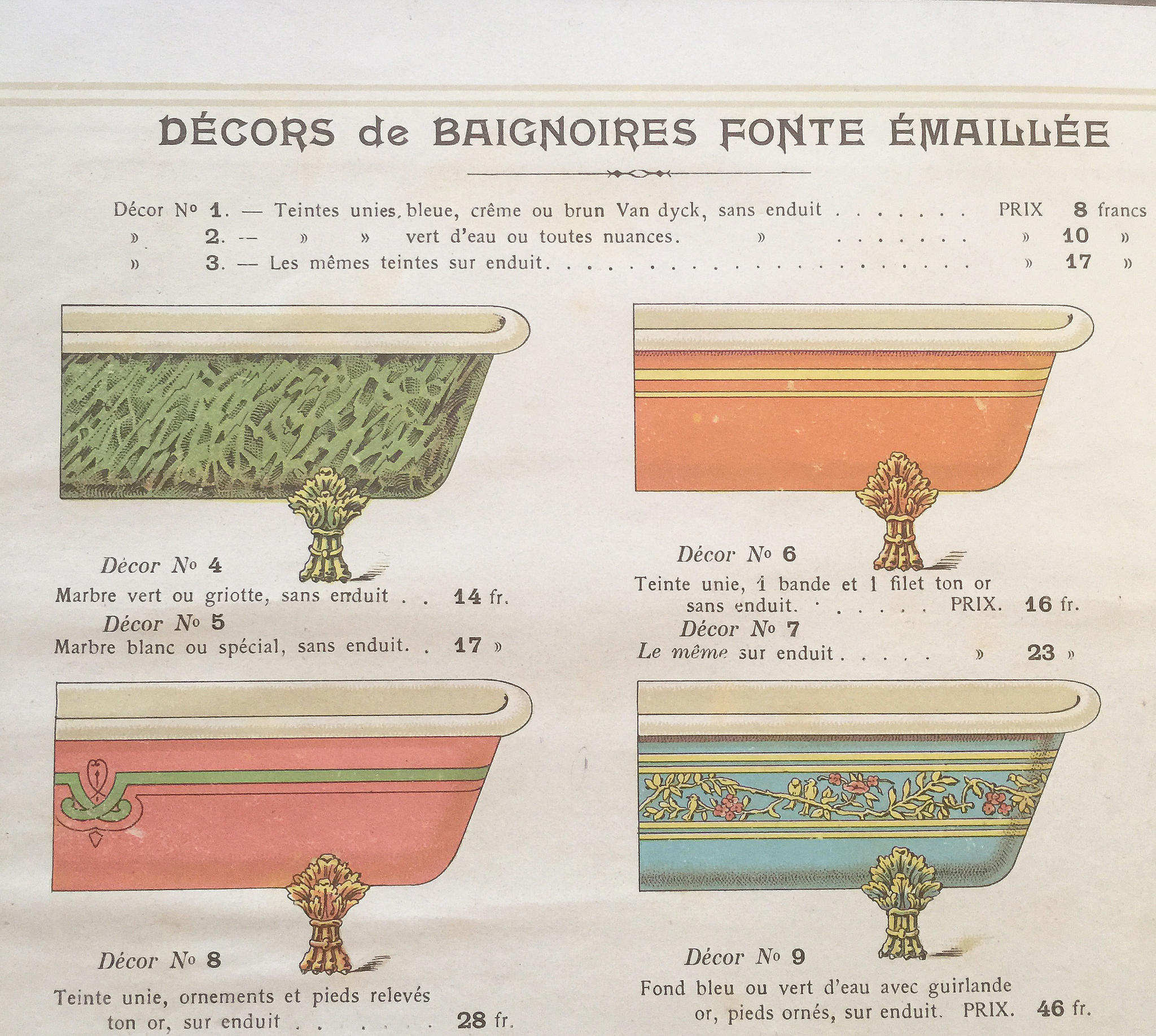
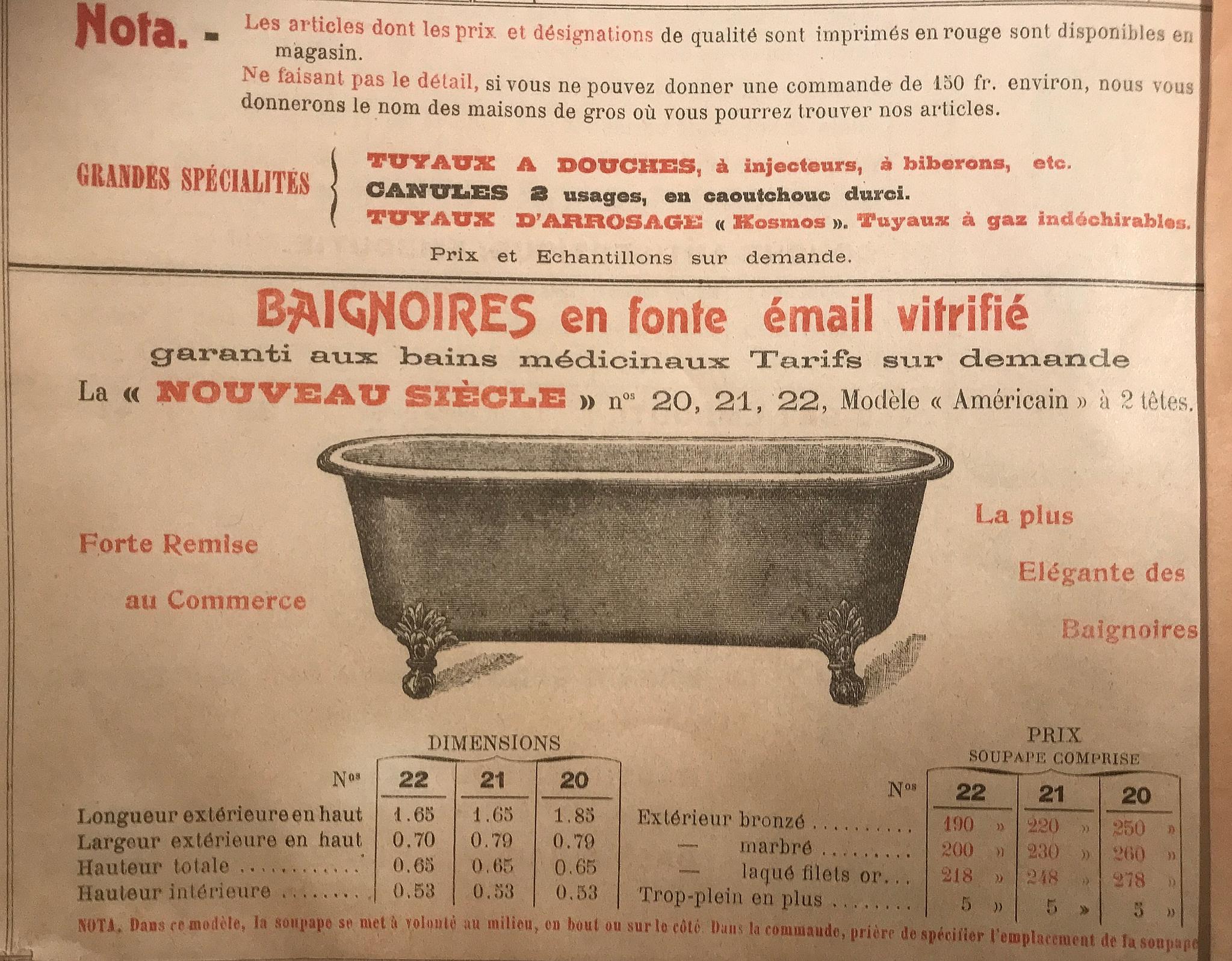
 Taking a Shower in the Bathtub
Taking a Shower in the Bathtub
Free-standing showers were rare at the end of the 19th and beginning of the 20th century. The first showers had a water tank that had to be filled with (warm) water and that was placed over a round zinc shower tray.
In the beginning taking a shower was considered to be wholesome and therapeutic. In health resorts, one could undergo cold showers with a strong gush by way of massage on doctor’s orders. The German doctor Kneipp was a strong believer in these cold showers. Taking a shower was considered a manly affair. Men were encouraged to take a shower after work or sports. The strong water gush was considered unsuited for the fragile body of a woman. The price of a separate shower also played a part, it was a luxury not many could afford. Most households had a bath with two separate taps, one for hot and one for cold water. At the beginning of the twentieth century the salutary qualities of the shower were considered to be more and more important. A warm bath had to be followed by a cold shower so the sanitary firms began to sell bath taps with a shower. For the ladies, they developed special neck showers to prevent the hair from getting wet and complicated hairdo’s to be spoiled and also to avoid the strong gush of the shower. A separate shower was only for the most exclusive bathrooms. In that case there often was a stand-alone cast-iron shower tray on legs or porcelain tray with a shower over it or a complicated cage like construction that gave water from the sides. In fact, it was not till after the Second World War that a separate shower in the bathroom became standard.

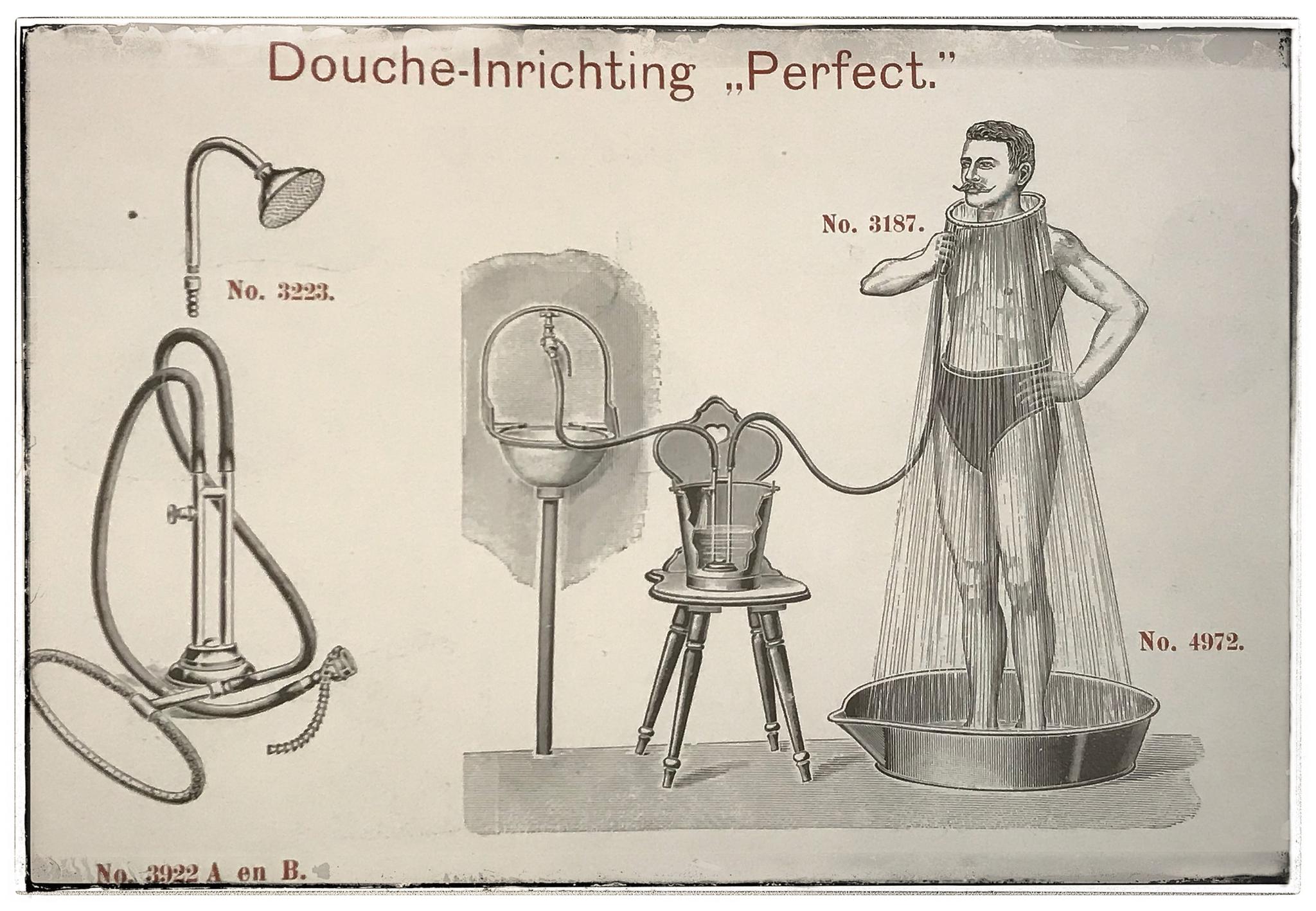
 Handbasin, Washbowl and Washbasin
Handbasin, Washbowl and Washbasin
The handbasin and water jug – the bathing facilities in the bedroom – changed rapidly at the end of the 19th century. In the 18th and 19th century it was more of a toilet table with a handbasin and water jug but also room for a wig, a place for hairbrushes and other toiletries. At the end of the 19th century it became a piece of furniture with a deep-set basin and a water tank, in the absence of running water. The tank had to be filled with warm water in the morning, the basin in the marble top could be emptied with a complicated turn over mechanism.
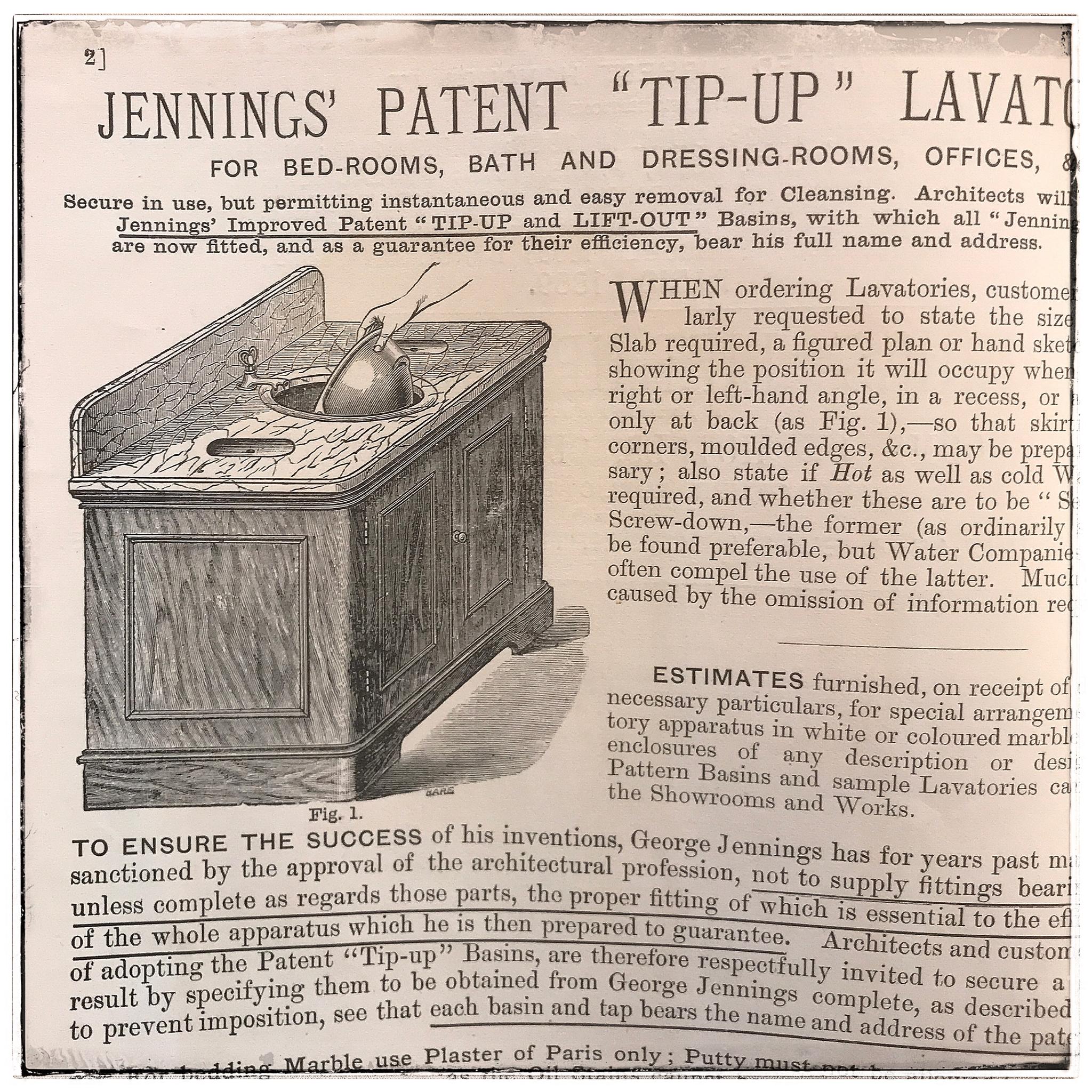
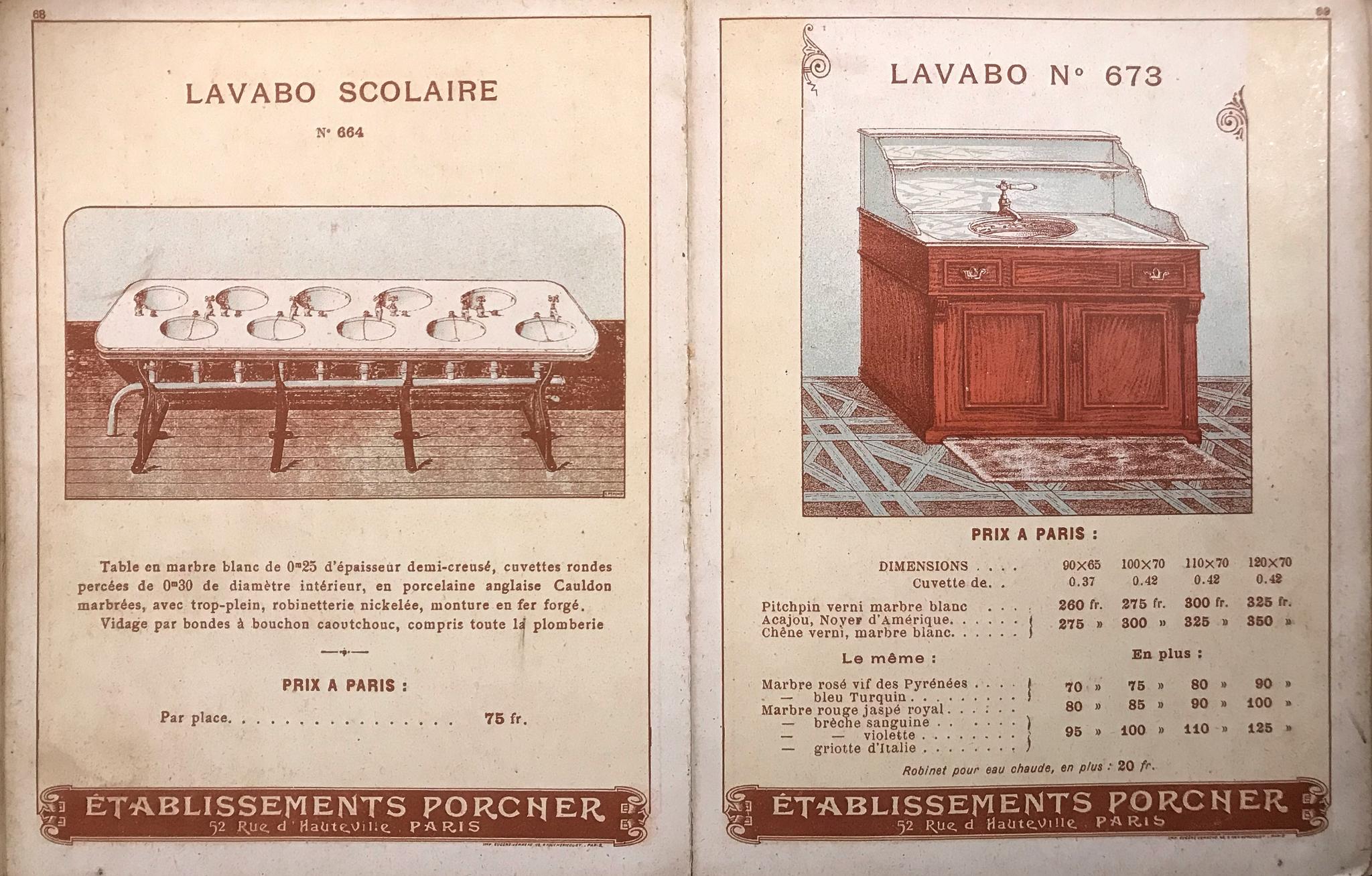
The used water ended up in a bucket that had to be emptied at the end of the morning (by the servant). The washing ritual was repeated in the evening. When running water was installed in the houses these pieces of furniture could be connected to the water supply system and sometimes to the sewage. The washbasin then moved from the bedroom to the bathroom. The wooden piece of furniture was replaced by other ‘modern’ materials. The porcelain basin in a marble top changed into a square basin with a raised edge against sprinkling water. The first washbasins were supported by a frame made out of modern cast-iron that could be molded in all kinds of capricious shapes.
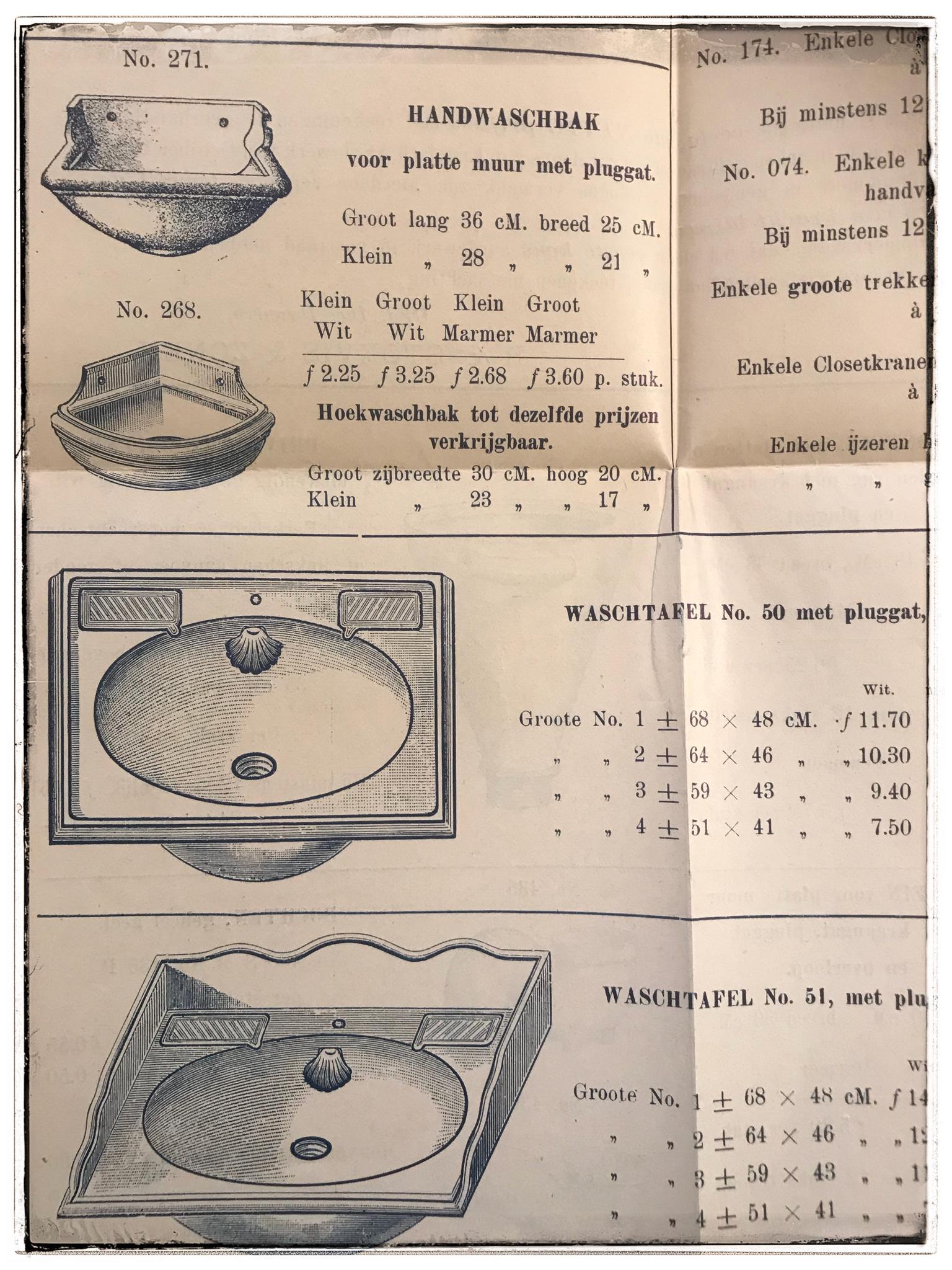
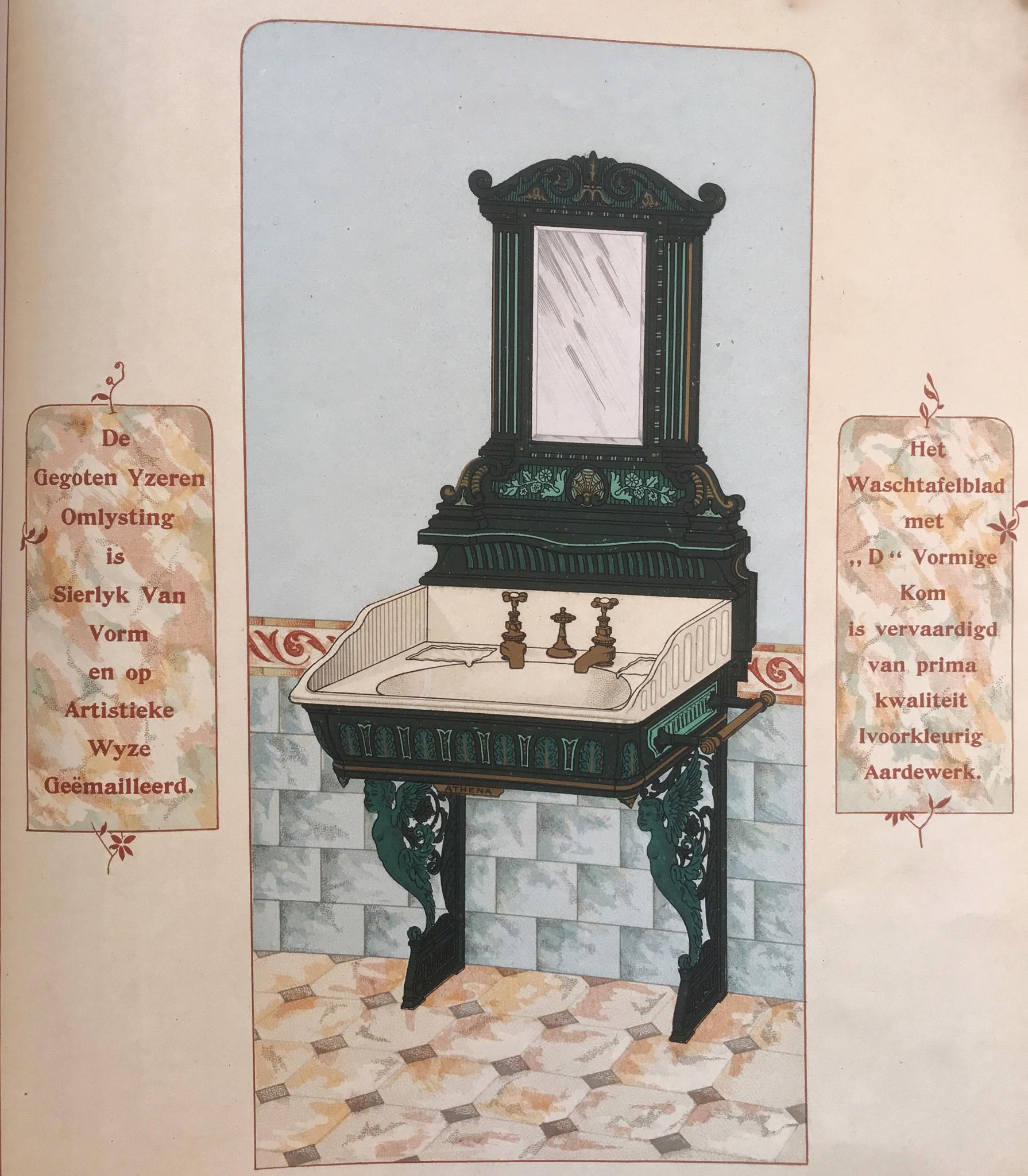
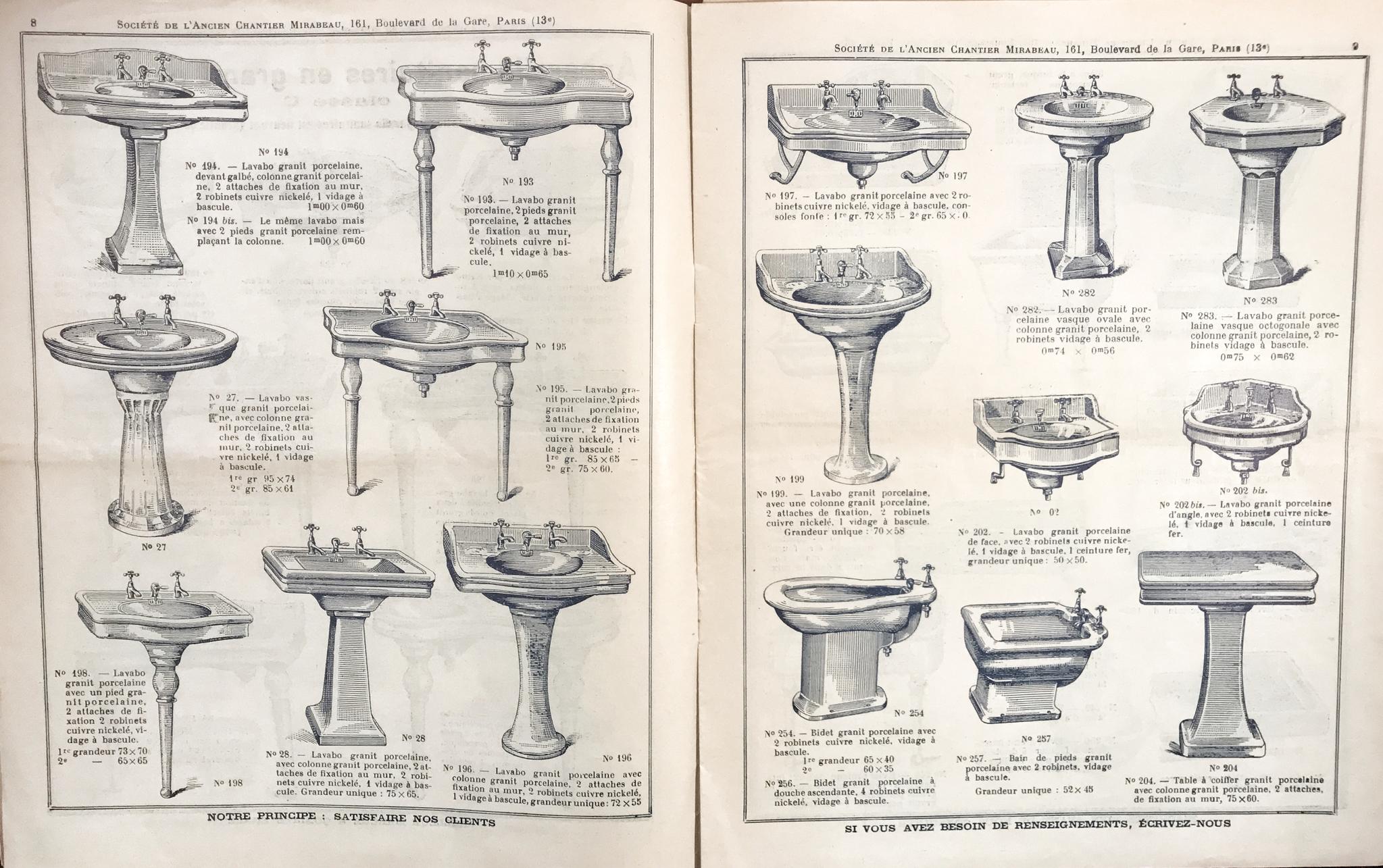
Around 1900 the sanitary firms are also starting to produce washbasins that are completely made out of the more hygienic porcelain or fire clay. These basins were made in series and the customer could choose between many different models; on a column, on one or two legs, in a frame or hanging on brackets. For schools and canteens, the firms developed specially connected models and also for hospitals and health resorts there were different solutions. The catalogues from between 1900 and 1930 (often complete books of over 200 pages) show that the collections were huge, the choice between different models almost infinite and this shows the demand for sanitary appliances was substantial. The bathroom had become – certainly in France – an important part of the home.
 The Development of the Toilet
The Development of the Toilet
The development of the toilet is a story apart in sanitary history. The first toilet with the possibility to flush was invented in England in 1596 by Sir John Harrington. He published his ‘The Metamorphosis of Ajax’ in 1595, it described a prototype of a toilet with a flushing system. His invention didn’t find many followers in England or the rest of Europe, it was more of an incident. It was only in the 18th century that china firms started to produce porcelain or tin chamber pots. These pots were supposed to be invisible and were hidden in a sideboard or beautiful chair. The chamber pot itself was allowed to be a beauty with all kinds of elegant decorations. During the 18th and 19th century several inventors got a patent on a toilet system. The end of the 19th century was the golden age of the toilet when you look at shape and decoration. The catalogues of European and American firms are filled with toilets with the most euphonious names such as ‘Niagara Falls’, ‘Silentium’ or ‘Simplicitas’. Each of which were richly decorated with flower motives and shaped like a dolphin or lion. When meant for a public building the toilets would often have a picture of a small fly or bumble bee under the glaze in the pot, meant for the gentlemen to aim at. The bumble bee was actually a joke. In Latin ‘apis’ means bumble bee and the idea was that the ‘educated gentlemen from the higher classes’ that knew Latin would smile while ‘taking a piss’ and not sprinkle their expensive shoes.
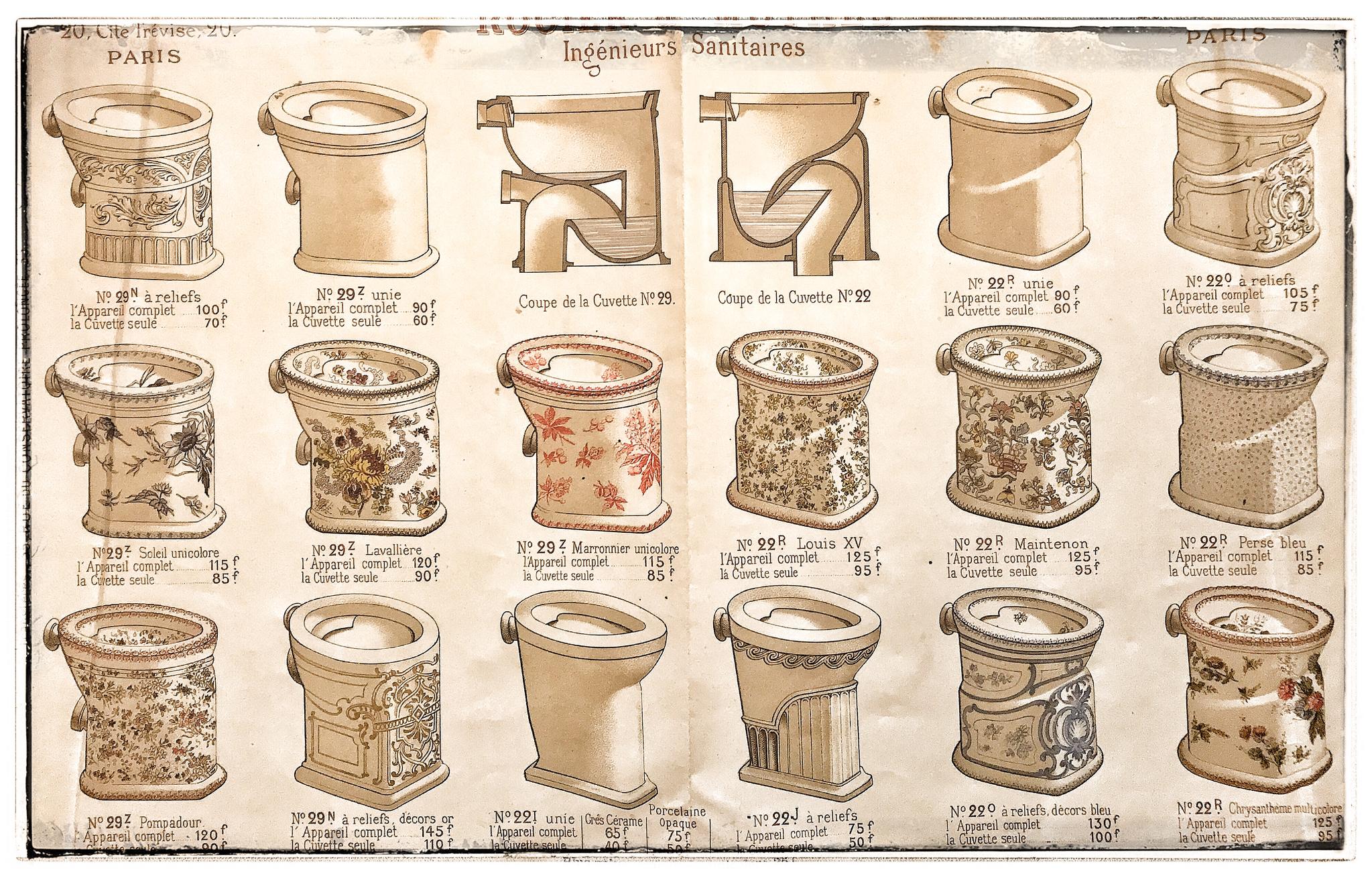
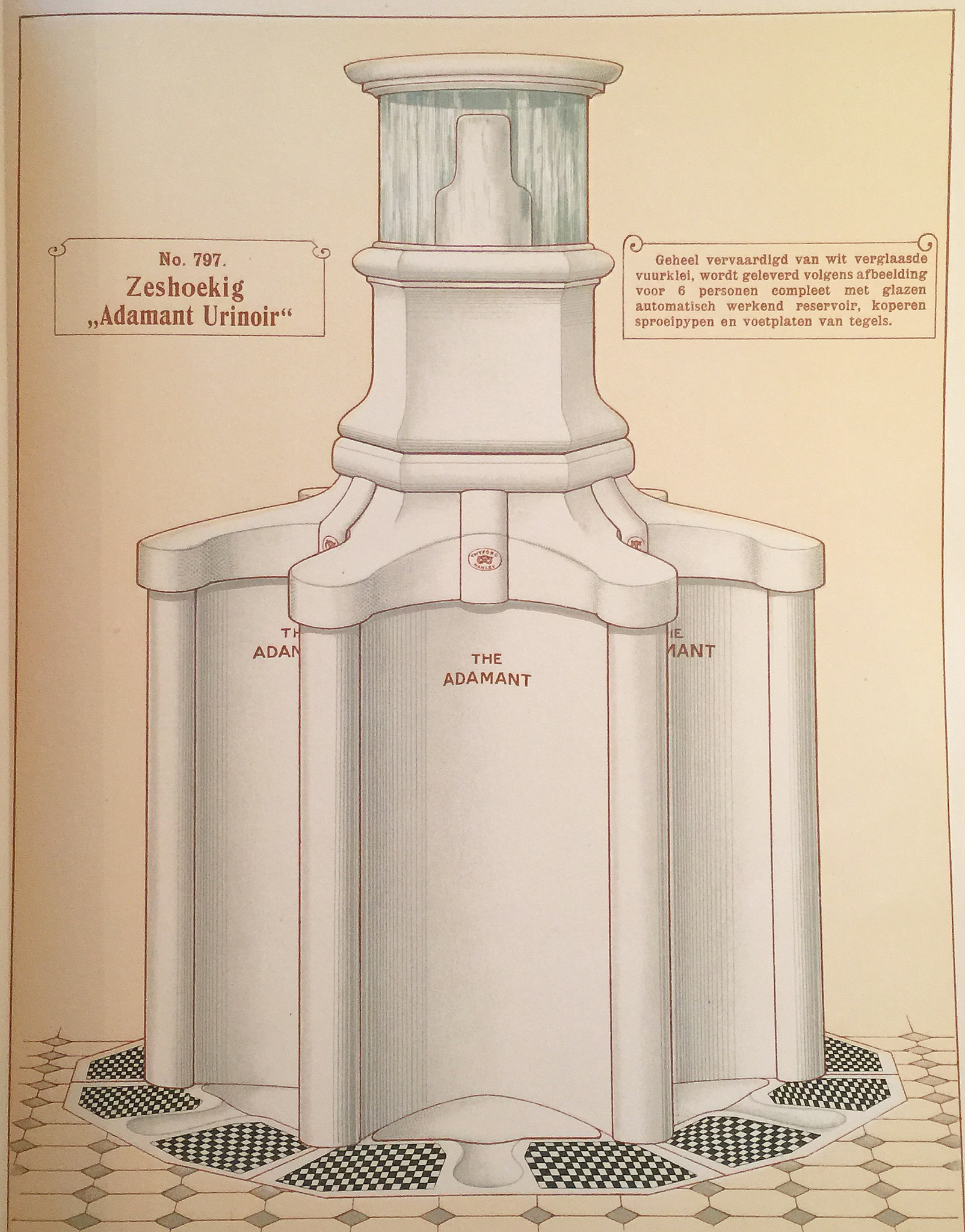
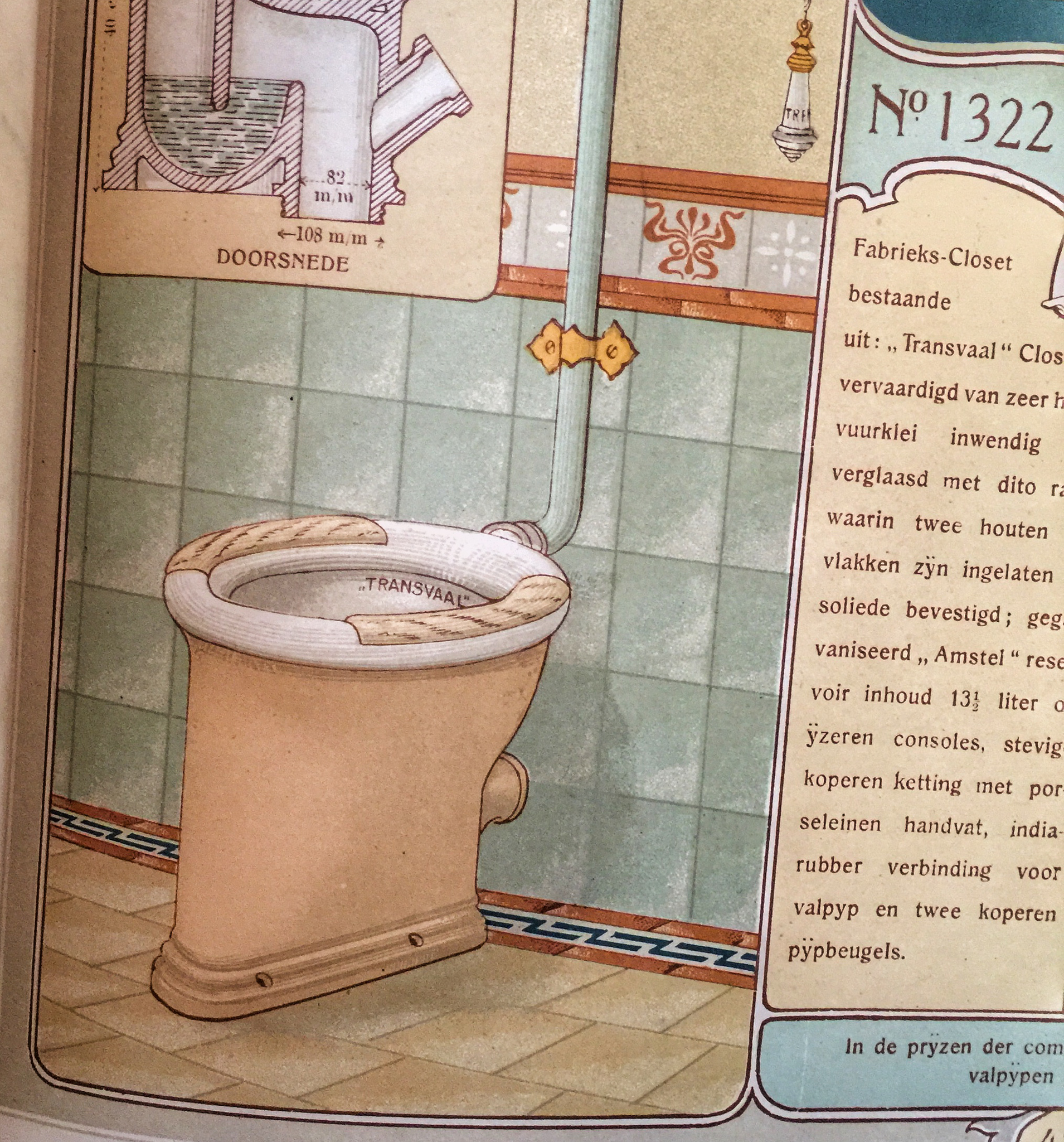
 Washbasins and Cloakroom Basins
Washbasins and Cloakroom Basins
In Dutch houses from the end of the 19th century you often find a small corner basin in the corridor on the second floor. Most of the time this was the first and only water connection in these houses. Sometimes you also find a small cloakroom basin in the hall next to the lavatory door. This was meant to wash your hands after a visit to the toilet but also for people that came in from outside. Most of these basins have a high back to prevent water splashing against the wall and sometimes they have a brass rack to put a bucket on. In the old Amsterdam canal houses we still find the impressive marble 17th century precursors of these 19th century china models. The sanitary firms had a huge collection of cloakroom basins: decorated with the most beautiful patterns, with a spherical back to create a niche, with shell-shaped basins or corner models.
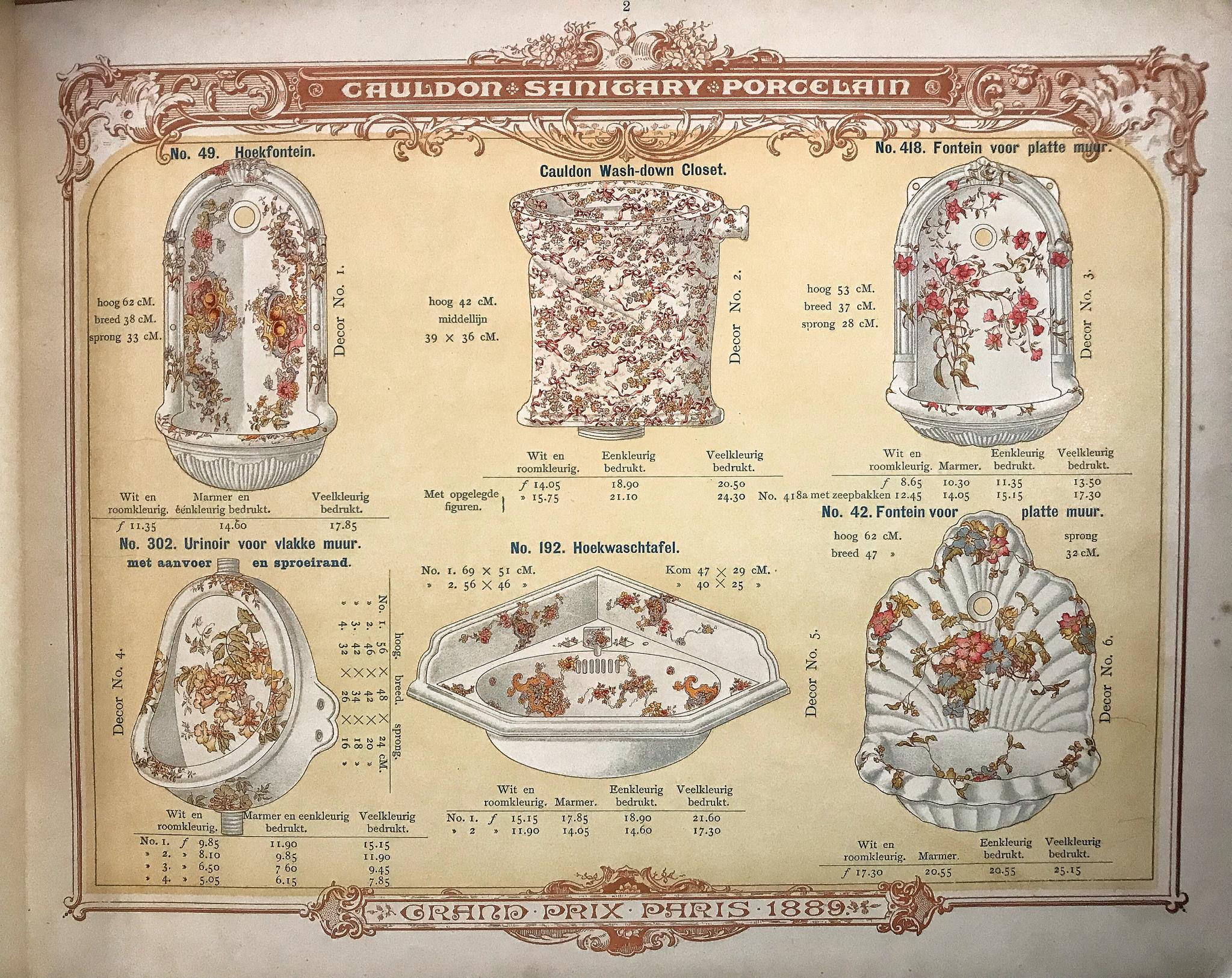

 About Taps
About Taps

The taps that were installed in the first bathrooms were made out of brass with a nickel finish. Because of wear and tear of the nickel you might get the impression that all antique taps were brass ones but that’s not the case. Around 1900 all firms have nickel taps in their collection, it’s not until the twenties that chrome taps come into fashion and nickel becomes less popular. The first bath taps were not mixing taps, there was one tap for hot and one tap for cold water. With complicated bridge constructions, some firms would create mixing taps but these were the most expensive options you could find and only meant for the very rich.
When you look at the taps you notice that most firms were inspired by the medieval gargoyles (bec gargouille), elegant swan necks (col de cygne) or flat fish tails (queue de carpe) for the spout of the taps. The washbasins originally had two taps. Sometimes you find basins with only a cold water tap and a ring dish to fill the hole where a hot water tap could have been. Basins with ring dishes were often found in public restrooms. The ladies could put their precious rings on the dish when washing their hands so the rings wouldn’t get wet. The foil behind the diamonds wasn’t water resistant.
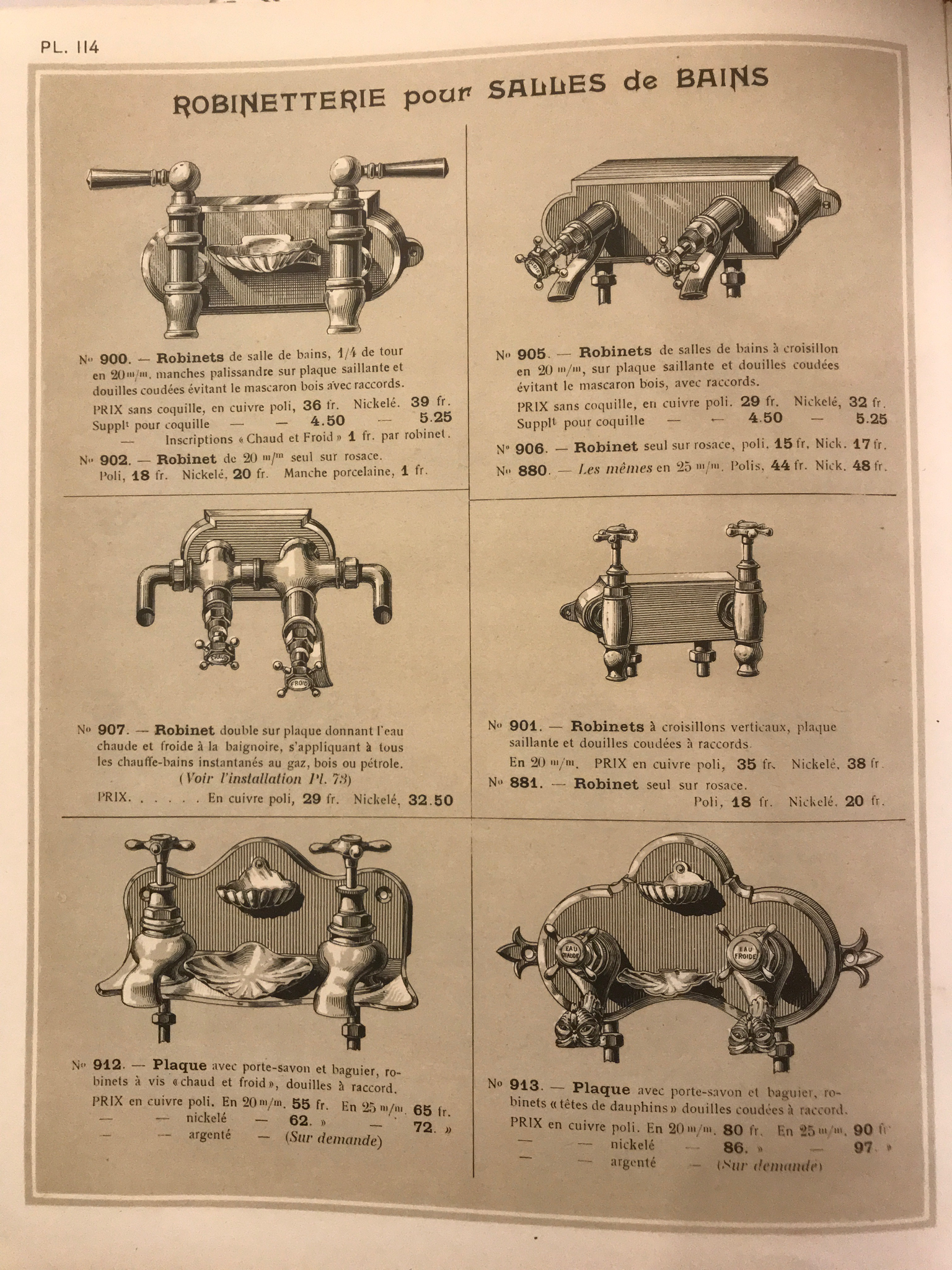
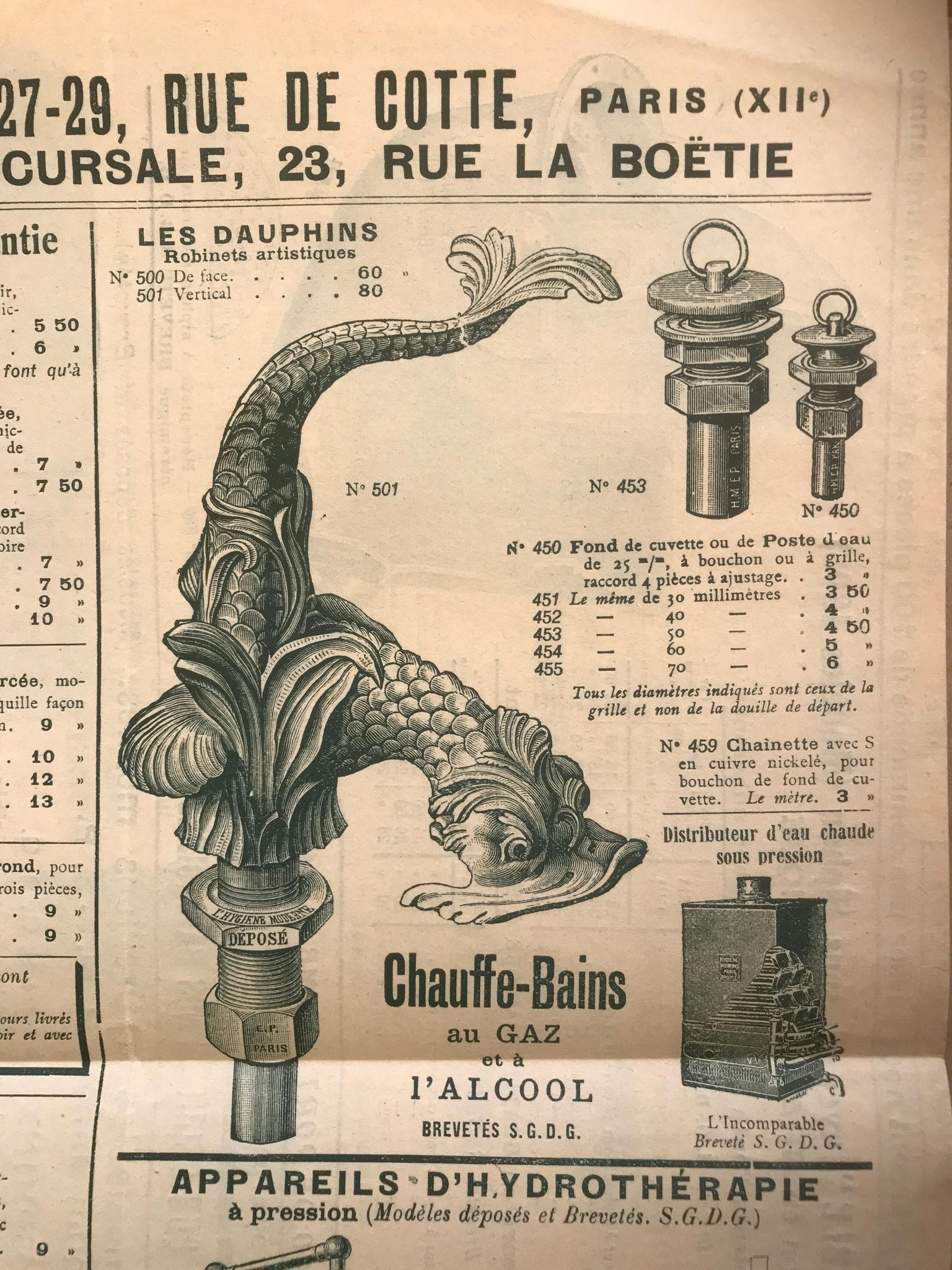
 Accessories
Accessories
For years and years bathrooms were being arranged following a strict pattern. Not considering the luxury of the bathroom every bathroom had the same necessities: a bath to bathe and shower in, a bidet and a washbasin with a shelf and mirror. These essentials could be completed with other elements such as a foot bath, a hip bath, a separate shower or a dressing table when the bathroom was more luxurious. The plumbing was still visible so the bath was placed against a wall. A free-standing bath was not an option, not even in the most luxurious bathroom, because it was not yet technically possible.
Some accessories could be found in almost every bathroom from the start. There was always a sponge basket on the rim of the bath. There was a shelf over the washbasin with tumbler holders and a carafe holder on the sides.
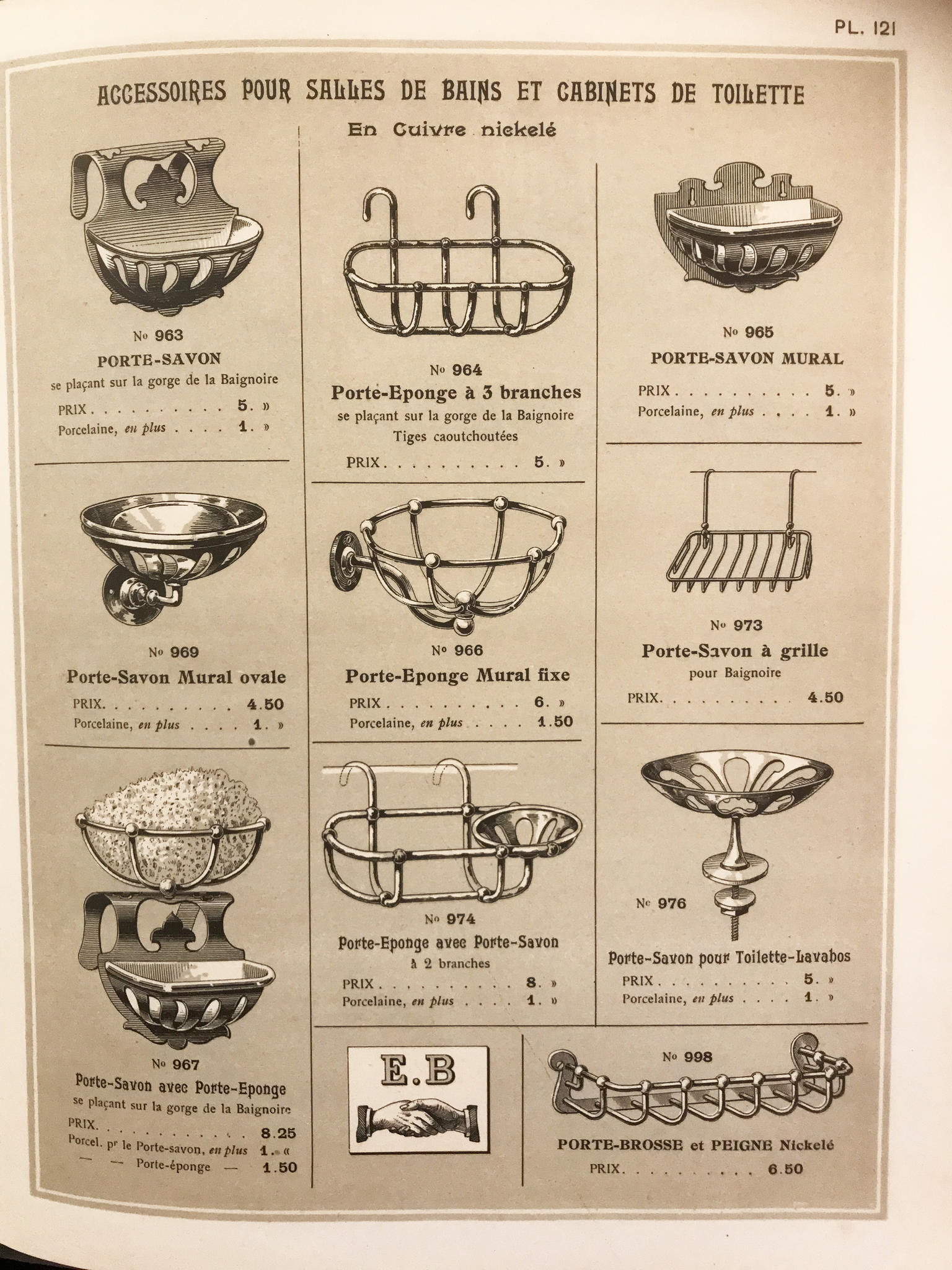
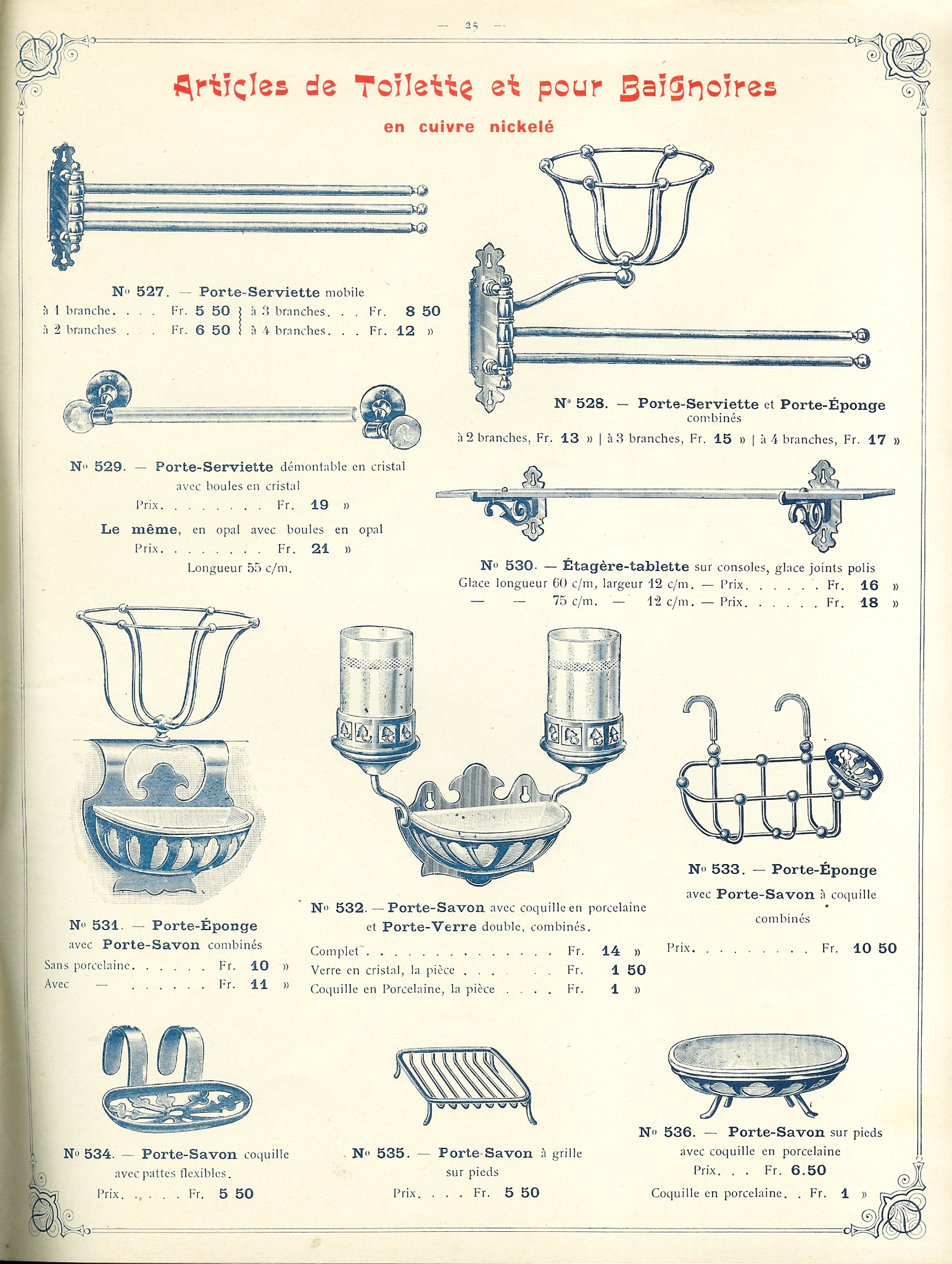
The carafe used to be filled with drinkable water because water from the taps wasn’t always suited for consumption. Then there were special holders for toothbrushes and soap dishes. Nickel plated iron gas lamps used to light the bathroom. Gas heating was used for towel heaters; small cupboards with a shelf to put towels on. A small flame under the cupboard kept the towels warm. When electricity was installed, the metal lamps became dangerous and china holders came into fashion.
Catalogues show an enormous diversity in accessories. At the beginning of the 20th century these accessories are mainly nickel plated, after the First World War there’s a growing collection of china accessories. A rarity among the bathroom accessories is the paper holder. Toilet paper was invented in the USA at the end of the 19th century. The first step was separate pieces of paper that fitted in a patented holder, after that came the invention of the roll that fitted in a wall holder. In France, they kept the system of the separate pieces of paper so you can’t find paper holders there, only china holders for separate pieces of paper. Antique paper holders for rolls are extremely rare. (link – read all about the history of the paper holder)
 The Interbellum
The Interbellum
After the First World War the forms and lines of sanitary appliances changed rapidly. The forms became simpler and in the twenties the cast-iron bathtub on feet was replaced by the first build-in bathes. At the end of the thirties the bathroom had evolved from a ‘boudoir’ next to the bedroom to a separate room. A bathroom had become available for the larger public, it was no longer meant for the most fortunate in society. In the beginning of the 20th century there was an incentive for several sanitary firms to present new patents, inventions and novelties in each catalogue and to advertise with them. For the customers, it was a matter of prestige to have the summit of a modern bathroom, with all comfort, in their newly built houses. But after the First World War most houses in France and England had a bathroom and there was great demand for sanitary appliances. Bathroom ware had become a mass product and available for everyone. The mass production of sanitary ware in Europe went hand in hand with a loss of quality. Production had to be faster and more efficient. The European arms race that preceded the Second World War caused a shortage in raw materials which reflected on the quality. Especially on the quality of the metal parts like taps and many accessories. The taps from the beginning of the 20th century are considerably heavier and of a better quality than the taps from the thirties. At the end of the thirties the shapes were less varied, the collections smaller and all in all there was less diversity. After the Second World War, most collections were even simpler. The years after the war are not exactly a highlight in bathroom history.


